 Search by Keyword
|
“LUCY IN THE SKY WITH DIAMONDS”
(John Lennon – Paul McCartney)
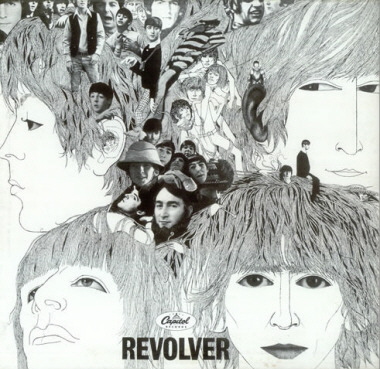 “’Rubber Soul’ was the pot album and ‘Revolver’ was the acid…The drugs are to prevent the rest of the world from crowding in on you.” “’She Said She Said’...was written after an acid trip in LA during a break in The Beatles’ tour.” “’Dr. Robert’ was…mainly about drugs and pills. It was about myself: I was the one that carried all of the pills on tour and always have done.” “(Timothy) Leary was the one who was saying, ‘take it, take it, take it.’ And we followed his instructions in his ‘how to take a trip’ book. I did it just like he wrote it in the book, and then I wrote ‘Tomorrow Never Knows,’ which was almost the first acid song.” “’Rubber Soul’ was the pot album and ‘Revolver’ was the acid…The drugs are to prevent the rest of the world from crowding in on you.” “’She Said She Said’...was written after an acid trip in LA during a break in The Beatles’ tour.” “’Dr. Robert’ was…mainly about drugs and pills. It was about myself: I was the one that carried all of the pills on tour and always have done.” “(Timothy) Leary was the one who was saying, ‘take it, take it, take it.’ And we followed his instructions in his ‘how to take a trip’ book. I did it just like he wrote it in the book, and then I wrote ‘Tomorrow Never Knows,’ which was almost the first acid song.”
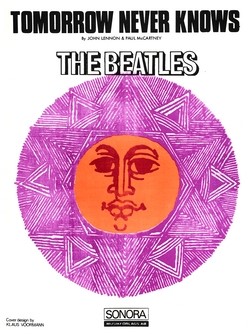 As noted in the above quotes, John Lennon was always very forthright about his use of drugs and how they were used as inspiration for specific recordings in The Beatles catalog. It is very apparent that, as the years went by, he felt no need to conceal any of this information from the public, who most likely had assumed as much anyway. As noted in the above quotes, John Lennon was always very forthright about his use of drugs and how they were used as inspiration for specific recordings in The Beatles catalog. It is very apparent that, as the years went by, he felt no need to conceal any of this information from the public, who most likely had assumed as much anyway.
Why is it, then, that when John went to great lengths to deny any drug connotations involved in composing the song “Lucy In The Sky With Diamonds,” most, even to this day, insist that Lennon is hiding the truth? For the remainder of his life, every time he was asked about the song's drug connections and his supposed insidious coding of the initials LSD in the song's title, he claimed it wasn’t intentional. Despite this fact, “Lucy” is still known as the prime drug-related Beatles song of their career. “Nobody believes me,” John exasperatedly said. Do you?
 Julian Lennon's drawing "Lucy In The Sky With Diamonds"
|
Songwriting History
“This is the truth,” confirms John Lennon. “My son came home and showed me this drawing of a strange looking woman flying around, and I said, ‘What is it?’ And he said it was Lucy in the sky with diamonds. I said, ‘Oh, that’s beautiful,’ and I immediately wrote a song about it.”
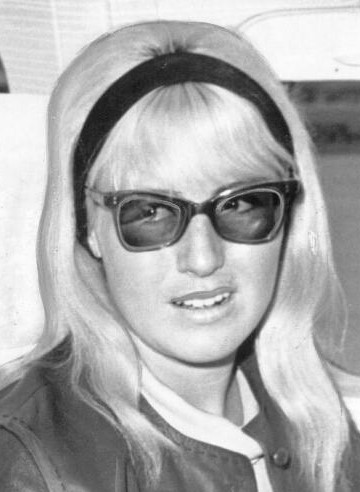 “I remember him coming home from school with it,” Cynthia Lennon recounts, “and showing it to his dad, who was sitting down. At the time, John didn’t say, ‘Oh my God! What a great title for a song,’ but it obviously stuck. It was just a simple child-like drawing of a little girl in the sky with stars. It was the usual house and trees and stars, and the little girl was Lucy, a girl from school.” “I remember him coming home from school with it,” Cynthia Lennon recounts, “and showing it to his dad, who was sitting down. At the time, John didn’t say, ‘Oh my God! What a great title for a song,’ but it obviously stuck. It was just a simple child-like drawing of a little girl in the sky with stars. It was the usual house and trees and stars, and the little girl was Lucy, a girl from school.”
 “I happened to be there the day Julian came home from school with a pastel drawing of his classmate Lucy’s face against a backdrop of exploding, multi-colored stars,” recalls Lennon’s childhood friend Pete Shotton. “Unusually impressed with his son’s handiwork, John asked what the drawing was called. ‘It’s Lucy in the sky with diamonds, Daddy.’ ‘Fantastic,’ John said, and promptly incorporated that memorable phrase into a new song.” “I happened to be there the day Julian came home from school with a pastel drawing of his classmate Lucy’s face against a backdrop of exploding, multi-colored stars,” recalls Lennon’s childhood friend Pete Shotton. “Unusually impressed with his son’s handiwork, John asked what the drawing was called. ‘It’s Lucy in the sky with diamonds, Daddy.’ ‘Fantastic,’ John said, and promptly incorporated that memorable phrase into a new song.”
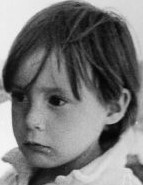 “I don’t know why I called it that,” Julian Lennon wonders, “or why it stood out from all my other drawings, but I obviously had an affection for Lucy at that age. I used to show dad everything I’d built or painted at school and this one sparked off the idea for a song.” “I don’t know why I called it that,” Julian Lennon wonders, “or why it stood out from all my other drawings, but I obviously had an affection for Lucy at that age. I used to show dad everything I’d built or painted at school and this one sparked off the idea for a song.”
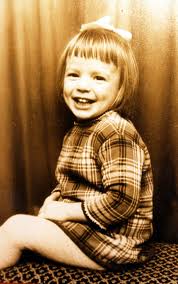 Lucy O’Donnell is the school friend of Julian who, as Steve Turner writes about in his 1994 book “A Hard Day’s Write,” happened to have been living “near the Lennon family in Weybridge and she and Julian were pupils at Heath House, a nursery school that was run by two old ladies in a rambling Edwardian house.” “I can remember Julian at school,” Lucy O'Donnell related in Steve Turner’s book. She adds: “I can remember him very well. I can see his face clearly. We used to sit alongside each other in proper old-fashioned desks. The house was enormous and they had heavy curtains to divide the classrooms. Julian and I were a couple of little menaces from what I’ve been told.” Lucy O’Donnell is the school friend of Julian who, as Steve Turner writes about in his 1994 book “A Hard Day’s Write,” happened to have been living “near the Lennon family in Weybridge and she and Julian were pupils at Heath House, a nursery school that was run by two old ladies in a rambling Edwardian house.” “I can remember Julian at school,” Lucy O'Donnell related in Steve Turner’s book. She adds: “I can remember him very well. I can see his face clearly. We used to sit alongside each other in proper old-fashioned desks. The house was enormous and they had heavy curtains to divide the classrooms. Julian and I were a couple of little menaces from what I’ve been told.”
 Lucy O'Donnell described her recollections about the drawing in a 2007 BBC Radio interview and provided an example of what menaces they were back then. “I remember Julian and I both doing pictures on a double-sided easel, throwing paint at each other, much to the horror of the classroom attendant... Julian had painted a picture and on that particular day his father turned up with the chauffeur to pick him up from school.” Lucy O'Donnell described her recollections about the drawing in a 2007 BBC Radio interview and provided an example of what menaces they were back then. “I remember Julian and I both doing pictures on a double-sided easel, throwing paint at each other, much to the horror of the classroom attendant... Julian had painted a picture and on that particular day his father turned up with the chauffeur to pick him up from school.”
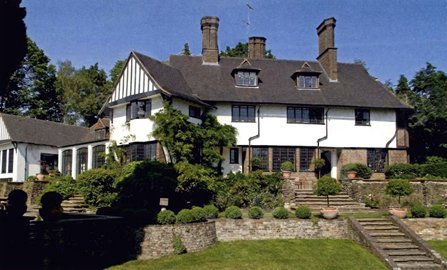 In his 1997 book “Many Years From Now,” Paul recalls the day the song was written: "I went up to John’s house in Weybridge. When I arrived we were having a cup of tea, and then he said, ‘Look at this great drawing Julian’s done. Look at the title!’ He showed me a drawing on school paper, a five-by-seven-inch piece of paper, of a little girl with lots of stars, and right across the top there was written, in very neat child handwriting, I think in pencil, ‘Lucy in the Sky with Diamonds.’ So I said, ‘What’s that mean?,’ thinking, Wow, fantastic title! John said, ‘It’s Lucy, a friend of his from school. And she’s in the sky.’" In his 1997 book “Many Years From Now,” Paul recalls the day the song was written: "I went up to John’s house in Weybridge. When I arrived we were having a cup of tea, and then he said, ‘Look at this great drawing Julian’s done. Look at the title!’ He showed me a drawing on school paper, a five-by-seven-inch piece of paper, of a little girl with lots of stars, and right across the top there was written, in very neat child handwriting, I think in pencil, ‘Lucy in the Sky with Diamonds.’ So I said, ‘What’s that mean?,’ thinking, Wow, fantastic title! John said, ‘It’s Lucy, a friend of his from school. And she’s in the sky.’"
 Paul continues: "Julian had drawn stars, and then he thought they were diamonds. They were child’s stars, there’s a way to draw them with two triangles, but he said diamonds because they can be interpreted as diamonds or stars. And we loved it and she was in the sky and it was very trippy to us. So we went upstairs and started writing it." The time of writing can easily be estimated as February of 1967. Paul continues: "Julian had drawn stars, and then he thought they were diamonds. They were child’s stars, there’s a way to draw them with two triangles, but he said diamonds because they can be interpreted as diamonds or stars. And we loved it and she was in the sky and it was very trippy to us. So we went upstairs and started writing it." The time of writing can easily be estimated as February of 1967.
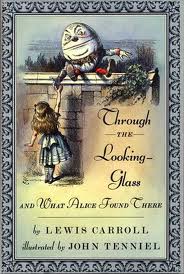 “The other images were from the book “Alice In Wonderland,” John Lennon stated in his 1980 Playboy interview. He also explained that year: “It was Alice in the boat. She is buying an egg, and it turns into Humpty Dumpty. The woman serving in the shop turns into a sheep, and then the next minute they are rowing in a rowing boat somewhere, and I was visualizing that.” The above imagery is inspired in part by the “Wool And Water” chapter in “Through The Looking Glass” by Lewis Carroll, one of John’s favorite childhood books. Quotes from this book include “she found they were in a little boat, gliding along between banks: so there was nothing for it but to do her best” and “A boat beneath a sunny sky, lingering onward dreamily in an evening of July.” “The other images were from the book “Alice In Wonderland,” John Lennon stated in his 1980 Playboy interview. He also explained that year: “It was Alice in the boat. She is buying an egg, and it turns into Humpty Dumpty. The woman serving in the shop turns into a sheep, and then the next minute they are rowing in a rowing boat somewhere, and I was visualizing that.” The above imagery is inspired in part by the “Wool And Water” chapter in “Through The Looking Glass” by Lewis Carroll, one of John’s favorite childhood books. Quotes from this book include “she found they were in a little boat, gliding along between banks: so there was nothing for it but to do her best” and “A boat beneath a sunny sky, lingering onward dreamily in an evening of July.”
 In “Many Years From Now,” McCartney explains the incorporation of this imagery into the song. “John had the title and he had the first verse. It started off very ‘Alice In Wonderland’: ‘Picture yourself in a boat, on a river…’ It’s very Alice. Both of us had read the Alice books and always referred to them, we were always talking about ‘Jabberwocky’ and we knew those more than any other books really. And when psychedelics came in, the heady quality of them was perfect. So we just went along with it. I sat there and wrote it with him: I offered ‘cellophane flowers’ and ‘newspaper taxis’ and Lennon replied with ‘kaleidoscope eyes.’ I remember which was which because we traded words off each other, as we always did…And in our mind it was an Alice thing, which both of us loved.” In “Many Years From Now,” McCartney explains the incorporation of this imagery into the song. “John had the title and he had the first verse. It started off very ‘Alice In Wonderland’: ‘Picture yourself in a boat, on a river…’ It’s very Alice. Both of us had read the Alice books and always referred to them, we were always talking about ‘Jabberwocky’ and we knew those more than any other books really. And when psychedelics came in, the heady quality of them was perfect. So we just went along with it. I sat there and wrote it with him: I offered ‘cellophane flowers’ and ‘newspaper taxis’ and Lennon replied with ‘kaleidoscope eyes.’ I remember which was which because we traded words off each other, as we always did…And in our mind it was an Alice thing, which both of us loved.”
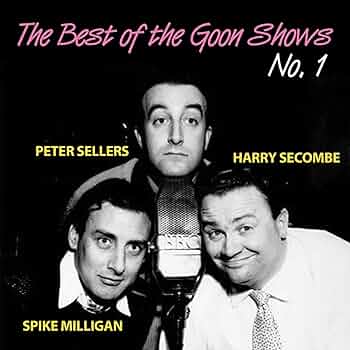 One other inspiration for these lyrics came from an unlikely source, The Goon Show. This was a very popular 50’s British radio comedy program featuring Peter Sellers, Harry Secombe and Spike Milligan. Since Lennon was a big fan of theirs, and George Martin happened to have produced recordings of the comedy team, Spike Milligan was invited to some of the “Sgt. Pepper” recording sessions and struck up a friendship with Lennon in particular. John informed him that “Lucy In The Sky With Diamonds,” as well as other Beatles songs, were partially inspired by the Goons humor. “We used to talk about ‘plasticine ties’ in ‘The Goon Show,’” recalls Spike Milligan, “and this crept up in ‘Lucy’ as ‘plasticine porters with looking glass ties.’ I knew Lennon quite well. He used to talk a lot about comedy. He was a ‘Goon Show’ freak. It all stopped when he married Yoko Ono. Everything stopped. He never asked for me again.” One other inspiration for these lyrics came from an unlikely source, The Goon Show. This was a very popular 50’s British radio comedy program featuring Peter Sellers, Harry Secombe and Spike Milligan. Since Lennon was a big fan of theirs, and George Martin happened to have produced recordings of the comedy team, Spike Milligan was invited to some of the “Sgt. Pepper” recording sessions and struck up a friendship with Lennon in particular. John informed him that “Lucy In The Sky With Diamonds,” as well as other Beatles songs, were partially inspired by the Goons humor. “We used to talk about ‘plasticine ties’ in ‘The Goon Show,’” recalls Spike Milligan, “and this crept up in ‘Lucy’ as ‘plasticine porters with looking glass ties.’ I knew Lennon quite well. He used to talk a lot about comedy. He was a ‘Goon Show’ freak. It all stopped when he married Yoko Ono. Everything stopped. He never asked for me again.”
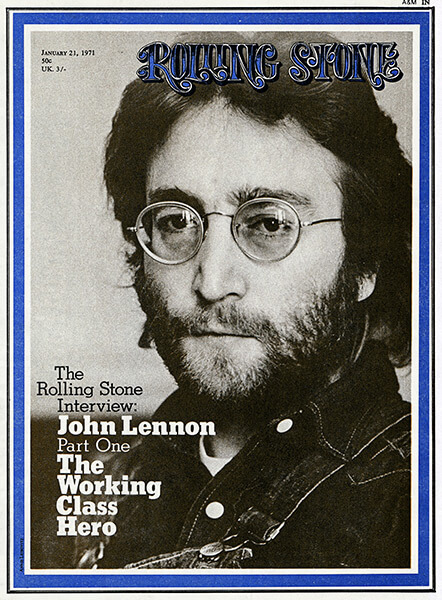 As for the initials of the song’s title, Lennon related his surprise in an interview conducted in September of 1971. “After the album had come out and the album had been published, someone noticed that the letters spelt out LSD and I had no idea about it, and, of course, after that, I went to see what the other songs spelt out. They didn’t spell anything out. It wasn’t about that (LSD) at all. But nobody believes me.” In a 1970 Rolling Stone interview, Lennon stated: “I swear to God, or swear to Mao or to anybody you like, I had no idea it spelled LSD.” As for the initials of the song’s title, Lennon related his surprise in an interview conducted in September of 1971. “After the album had come out and the album had been published, someone noticed that the letters spelt out LSD and I had no idea about it, and, of course, after that, I went to see what the other songs spelt out. They didn’t spell anything out. It wasn’t about that (LSD) at all. But nobody believes me.” In a 1970 Rolling Stone interview, Lennon stated: “I swear to God, or swear to Mao or to anybody you like, I had no idea it spelled LSD.”
“I swear we didn’t notice that when it came out,” McCartney concurs. “In actual fact, if you want to be pedantic you’d have to say it is LITSWD, but of course LSD is a better story.”
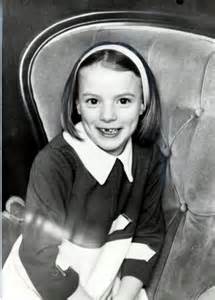 Nonetheless, the rumor spread and, with its apparent "trippy" lyrics, the world was convinced and it became one of a few “Sgt. Pepper” songs that made the "banned" list for various radio stations worldwide. Even Lucy O’Donnell, who wasn’t aware of the song’s origins until she was about 13, became convinced of this supposed misinformation. "I don't relate to the song, to that type of song,” Lucy O'Donnell later stated, adding: “As a teenager, I made the mistake of telling a couple of friends at school that I was the Lucy in the song and they said, 'No, it's not you, my parents said it's about drugs.' And I didn't know what LSD was at the time, so I just kept it quiet, to myself." Nonetheless, the rumor spread and, with its apparent "trippy" lyrics, the world was convinced and it became one of a few “Sgt. Pepper” songs that made the "banned" list for various radio stations worldwide. Even Lucy O’Donnell, who wasn’t aware of the song’s origins until she was about 13, became convinced of this supposed misinformation. "I don't relate to the song, to that type of song,” Lucy O'Donnell later stated, adding: “As a teenager, I made the mistake of telling a couple of friends at school that I was the Lucy in the song and they said, 'No, it's not you, my parents said it's about drugs.' And I didn't know what LSD was at the time, so I just kept it quiet, to myself."
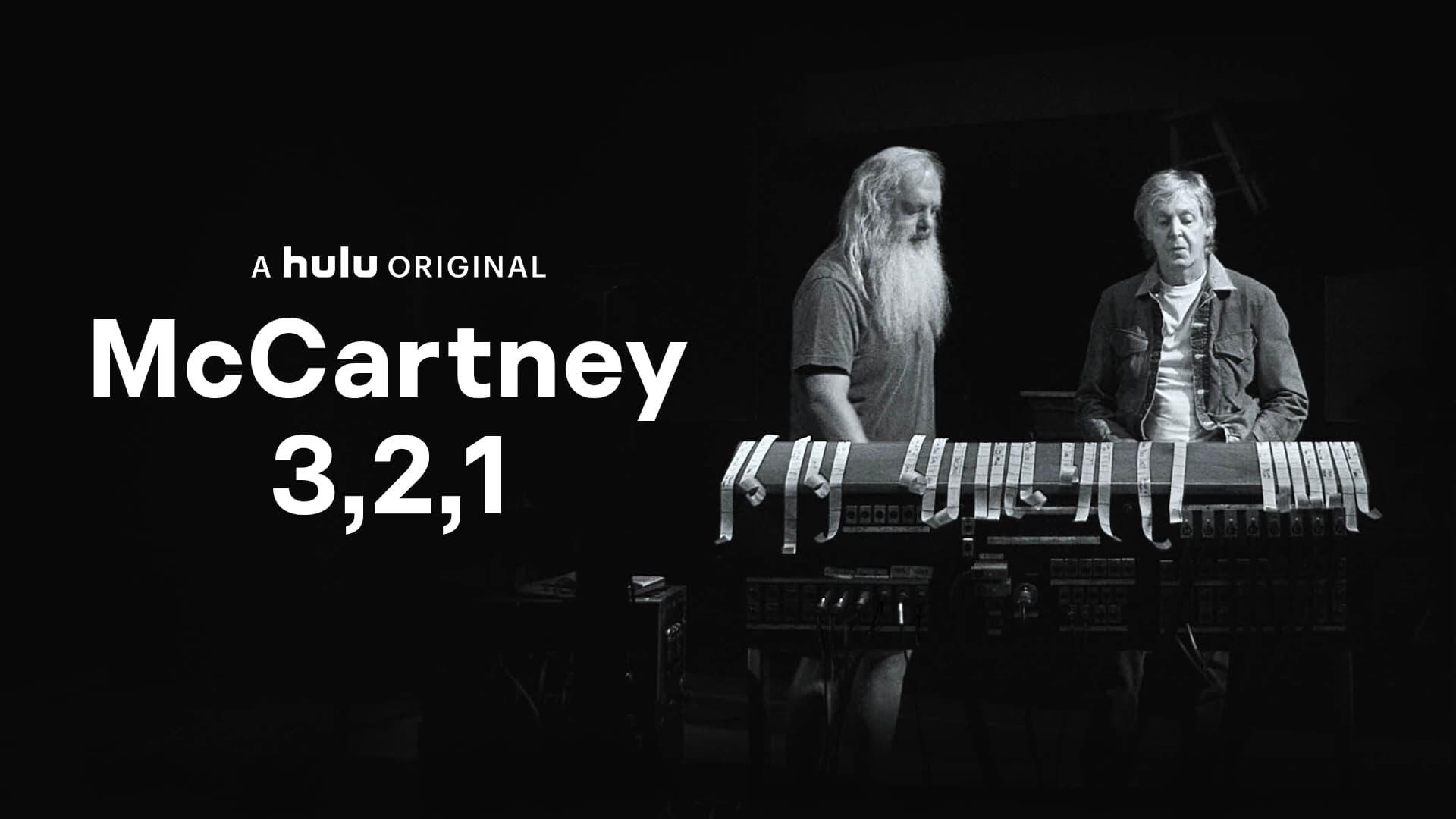 However, as briefly touched on above, Paul confirmed that “psychedelics” had a bit of influence in putting the song together. In a 2004 interview, when Paul was asked about drug references in Beatles songs, he started a brief list and included the statement: “’Lucy In The Sky,’ that’s pretty obvious.” However, he added: "but, you know, it's easy to overestimate the influence of drugs on the Beatles' music." In Paul's 2021 Hulu documentary series "McCartney 3,2,1," he solidly states about this song, "It was a head job...The truth is, everyone was getting stoned. (Sgt. Pepper) was intentionally a sort of fun album for the high times." However, as briefly touched on above, Paul confirmed that “psychedelics” had a bit of influence in putting the song together. In a 2004 interview, when Paul was asked about drug references in Beatles songs, he started a brief list and included the statement: “’Lucy In The Sky,’ that’s pretty obvious.” However, he added: "but, you know, it's easy to overestimate the influence of drugs on the Beatles' music." In Paul's 2021 Hulu documentary series "McCartney 3,2,1," he solidly states about this song, "It was a head job...The truth is, everyone was getting stoned. (Sgt. Pepper) was intentionally a sort of fun album for the high times."
Recording History
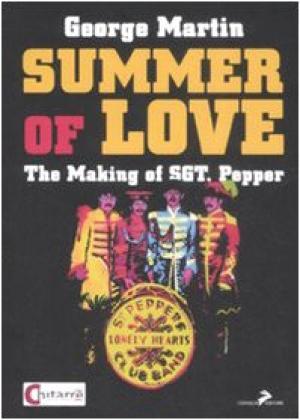 The first day of recording for the song, February 28th, 1967 in EMI Studio Two, was actually used entirely for rehearsals, no known takes being put to tape at all. According to George Martin in his 1995 book “Summer Of Love,” this session could easily be considered part of the songwriting process, John composing much of the song “on the hoof.” The first day of recording for the song, February 28th, 1967 in EMI Studio Two, was actually used entirely for rehearsals, no known takes being put to tape at all. According to George Martin in his 1995 book “Summer Of Love,” this session could easily be considered part of the songwriting process, John composing much of the song “on the hoof.”
 Eight hours of studio rehearsals, from 7 pm to 3 am the next morning, is practically unheard of these days…and even for back then, if you weren’t The Beatles, that is. With “studio time being hardly a cheap commodity,” as explained by Mark Lewisohn in his informative book “The Beatles Recording Sessions,” “in the '60s, with EMI recording The Beatles and owning the studios at Abbey Road, the expense of studio time was merely an internal paper transaction and was not deducted from the Beatles’ royalty payments. No budget restraints were put on the group, nor onto George Martin, no longer an EMI employee.” As George Martin explained: “I can only presume that EMI realized it was onto a good thing.” Eight hours of studio rehearsals, from 7 pm to 3 am the next morning, is practically unheard of these days…and even for back then, if you weren’t The Beatles, that is. With “studio time being hardly a cheap commodity,” as explained by Mark Lewisohn in his informative book “The Beatles Recording Sessions,” “in the '60s, with EMI recording The Beatles and owning the studios at Abbey Road, the expense of studio time was merely an internal paper transaction and was not deducted from the Beatles’ royalty payments. No budget restraints were put on the group, nor onto George Martin, no longer an EMI employee.” As George Martin explained: “I can only presume that EMI realized it was onto a good thing.”
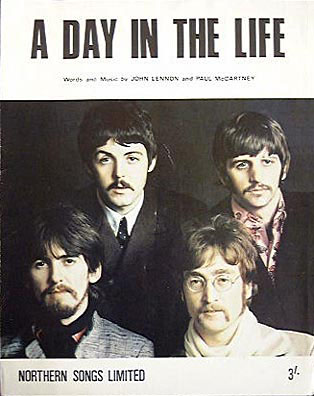 Having all the bugs worked out, the group filed back into EMI Studio Two the next day (or, should I say, later that same day), March 1st, 1967, for proper recording of the rhythm track for “Lucy In The Sky With Diamonds.” The session began once again at 7 pm, the very first order of business being recording a piano overdub for the previously mixed “A Day In The Life,” this overdub never being used. According to Kenneth Womack's 2023 book "Living The Beatles Legend: The Untold Story Of Mal Evans," the roadie then "laid out the morsels that comprised the Beatles' favorite snacks: an array of candy (including Mars bars and Smarties) and a crate of Coca-Cola. While John, Paul and George wrangled with the new tune, Ringo tucked into his first course, Heinz Baked Beans on toast prepared by Mal (Evans) in a frying pan on a portable electric burner. A news reporter and photographer from 'Life' magazine were there to watch the proceedings, and when the reporter saw what Ringo was eating, he remarked, 'My God man, you can't eat that!' He seemed to have beleived the superstar drummer snacked on nothing but caviar. Ringo stopped the conversation with the news reporter flat, excaiming, 'Did you?'" Having all the bugs worked out, the group filed back into EMI Studio Two the next day (or, should I say, later that same day), March 1st, 1967, for proper recording of the rhythm track for “Lucy In The Sky With Diamonds.” The session began once again at 7 pm, the very first order of business being recording a piano overdub for the previously mixed “A Day In The Life,” this overdub never being used. According to Kenneth Womack's 2023 book "Living The Beatles Legend: The Untold Story Of Mal Evans," the roadie then "laid out the morsels that comprised the Beatles' favorite snacks: an array of candy (including Mars bars and Smarties) and a crate of Coca-Cola. While John, Paul and George wrangled with the new tune, Ringo tucked into his first course, Heinz Baked Beans on toast prepared by Mal (Evans) in a frying pan on a portable electric burner. A news reporter and photographer from 'Life' magazine were there to watch the proceedings, and when the reporter saw what Ringo was eating, he remarked, 'My God man, you can't eat that!' He seemed to have beleived the superstar drummer snacked on nothing but caviar. Ringo stopped the conversation with the news reporter flat, excaiming, 'Did you?'"
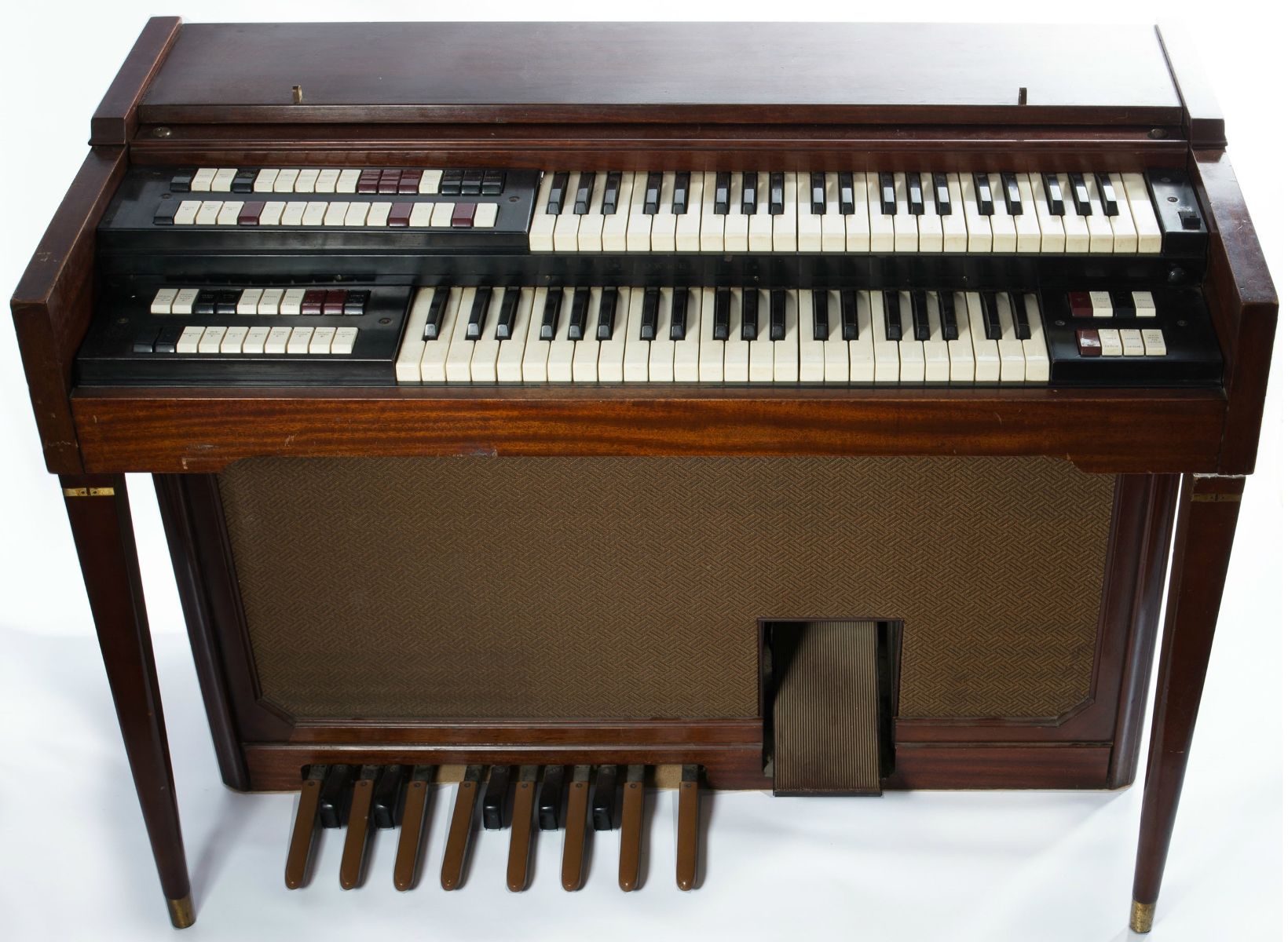 The rhythm track for “Lucy In The Sky With Diamonds” consisted of George Harrison on acoustic guitar and George Martin on piano on track one, Paul playing a Lowery organ that EMI "had lying around," as he explained in his "McCartney 3,2,1" Hulu documentary, on track two, Ringo on drums on track three, and Lennon singing guide vocals during the verses while playing maracas. In the June 1967 issue of “The Beatles Monthly Book,” Mal Evans and Neil Aspinall wrote that the song “starts with McCartney playing Hammond organ using a special organ stop which gives a bell-like overchord effect which makes it sound like a celeste.” The rhythm track for “Lucy In The Sky With Diamonds” consisted of George Harrison on acoustic guitar and George Martin on piano on track one, Paul playing a Lowery organ that EMI "had lying around," as he explained in his "McCartney 3,2,1" Hulu documentary, on track two, Ringo on drums on track three, and Lennon singing guide vocals during the verses while playing maracas. In the June 1967 issue of “The Beatles Monthly Book,” Mal Evans and Neil Aspinall wrote that the song “starts with McCartney playing Hammond organ using a special organ stop which gives a bell-like overchord effect which makes it sound like a celeste.”
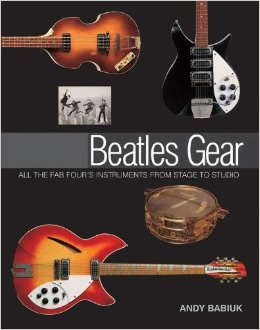 In the book “Beatles Gear,” however, author Andy Babiuk debunks this statement. “Photographic evidence reveals that McCartney in fact used a Lowery DSO Heritage Deluxe organ,” Andy Babiuk maintains. "It was the Lowery DSO’s preset voices of harpsichord, vibraharp, guitar and ‘music box’ that provided the magical tones required." As indicated in the liner notes of the "Anniversary Edition" of the "Sgt. Pepper" album, and as can be easily heard, Paul repeatedly changed settings back and forth on the organ to differentiate the tones used for the verses and choruses. In the book “Beatles Gear,” however, author Andy Babiuk debunks this statement. “Photographic evidence reveals that McCartney in fact used a Lowery DSO Heritage Deluxe organ,” Andy Babiuk maintains. "It was the Lowery DSO’s preset voices of harpsichord, vibraharp, guitar and ‘music box’ that provided the magical tones required." As indicated in the liner notes of the "Anniversary Edition" of the "Sgt. Pepper" album, and as can be easily heard, Paul repeatedly changed settings back and forth on the organ to differentiate the tones used for the verses and choruses.
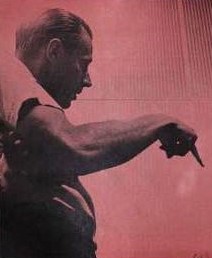 As witnessed after this recording was completed, author Mark Lewisohn relates how Lennon was "singing the words 'Cellophane flowers of yellow and green' in such a way that each was enunciated slowly, separately and precisely. Paul can be heard to suggest he sing them quicker, in one flowing sentence, to which John replied, 'OK,' and did just that." In fact, when analyzing John's vocal performance at this recording session, it reveals the evolution of delivery and feel that his vocals went through as the song took shape in the studio. "Over that very, very simple and beautiful (keyboard) phrase, John sang just one note," George Martin explains in the film "The Making Of Sgt. Pepper." "He developed it, I mean, he had a way of finding out what he wanted to sing, even as we were recording." As witnessed after this recording was completed, author Mark Lewisohn relates how Lennon was "singing the words 'Cellophane flowers of yellow and green' in such a way that each was enunciated slowly, separately and precisely. Paul can be heard to suggest he sing them quicker, in one flowing sentence, to which John replied, 'OK,' and did just that." In fact, when analyzing John's vocal performance at this recording session, it reveals the evolution of delivery and feel that his vocals went through as the song took shape in the studio. "Over that very, very simple and beautiful (keyboard) phrase, John sang just one note," George Martin explains in the film "The Making Of Sgt. Pepper." "He developed it, I mean, he had a way of finding out what he wanted to sing, even as we were recording."
 "Take one," recorded on this day, can be heard in its entirity on some editions of the 50th Anniversary releases of the "Sgt. Pepper" album as a bonus track. After they goofed around on their instruments a bit, engineer Geoff Emerick announces "take one" to get them focused. However, George Harrison questions whether the vocal mic in front of him is recording or not. George Martin replies, "It doesn't go on tape, George...it's only in our cans," meaning the headphones they all were wearing. McCartney then explains it as "Direct Injection," which was a transformer box invented by EMI engineer Ken Townsend and was first used by The Beatles during these sessions. This take made it through the entire song but was deemed unsuitable, possibly because of George Martin playing wrong chords in a small section of the repeating chorus at the end of the song. "Take one," recorded on this day, can be heard in its entirity on some editions of the 50th Anniversary releases of the "Sgt. Pepper" album as a bonus track. After they goofed around on their instruments a bit, engineer Geoff Emerick announces "take one" to get them focused. However, George Harrison questions whether the vocal mic in front of him is recording or not. George Martin replies, "It doesn't go on tape, George...it's only in our cans," meaning the headphones they all were wearing. McCartney then explains it as "Direct Injection," which was a transformer box invented by EMI engineer Ken Townsend and was first used by The Beatles during these sessions. This take made it through the entire song but was deemed unsuitable, possibly because of George Martin playing wrong chords in a small section of the repeating chorus at the end of the song.
 Engineer Geoff Emerick, in his 2007 book “Here, There And Everywhere,” also notices the change in vocal delivery: “By this point the four Beatles were starting to get a little fed up with being stuck in the studio. After all, they’d been there for nearly five months and it was not the dead of winter anymore. The weather was starting to brighten, so they were probably starting to get itchy feet.” Engineer Geoff Emerick, in his 2007 book “Here, There And Everywhere,” also notices the change in vocal delivery: “By this point the four Beatles were starting to get a little fed up with being stuck in the studio. After all, they’d been there for nearly five months and it was not the dead of winter anymore. The weather was starting to brighten, so they were probably starting to get itchy feet.”
 "By now, it was evident that John’s personality was changing,” Geoff Emerick continues. "Instead of being opinionated about everything, he was becoming complacent; in fact, he seemed quite content to have someone else do his thinking for him, even when we were working on one of his own songs. By the spring of 1967, he was becoming increasingly disengaged …No doubt Paul was aware of the situation, and he was seizing the opportunity to step in and expand his role within the band. That manifested itself down in the studio as they worked on this song, with John’s lead vocal getting less aggressive and more dreamy with each successive take. That might have been a reflection of what he was smoking behind the screens, but Paul was clearly steering him in that direction, too." "By now, it was evident that John’s personality was changing,” Geoff Emerick continues. "Instead of being opinionated about everything, he was becoming complacent; in fact, he seemed quite content to have someone else do his thinking for him, even when we were working on one of his own songs. By the spring of 1967, he was becoming increasingly disengaged …No doubt Paul was aware of the situation, and he was seizing the opportunity to step in and expand his role within the band. That manifested itself down in the studio as they worked on this song, with John’s lead vocal getting less aggressive and more dreamy with each successive take. That might have been a reflection of what he was smoking behind the screens, but Paul was clearly steering him in that direction, too."
 Also included as a bonus track on the "Super Deluxe Edition" of the "Sgt. Pepper" album is "take four," which was a false start, and then the complete "take five." Before "take four" begins, we witness McCartney taking charge as described above, instructing a distracted Lennon to "Concentrate...John...sing those quicker," demonstrating how Paul feels the vocals need to be sung. "Take four" finds Paul interrupting his organ playing which starts John giggling and thereby ends that take. Paul then instructs John, "Just come right in...," followed immediately with McCartney starting "take five" on the organ, this take making it all the way through the song. George Martin plays the correct piano chords at the end of the song this time, but they still feel the song can be improved upon. Also included as a bonus track on the "Super Deluxe Edition" of the "Sgt. Pepper" album is "take four," which was a false start, and then the complete "take five." Before "take four" begins, we witness McCartney taking charge as described above, instructing a distracted Lennon to "Concentrate...John...sing those quicker," demonstrating how Paul feels the vocals need to be sung. "Take four" finds Paul interrupting his organ playing which starts John giggling and thereby ends that take. Paul then instructs John, "Just come right in...," followed immediately with McCartney starting "take five" on the organ, this take making it all the way through the song. George Martin plays the correct piano chords at the end of the song this time, but they still feel the song can be improved upon.
 "Take six" was a complete recording as well, this being included on the 1996 album "Anthology 2," although a few overdubs from later takes had been added to this take to make it more palatable for the listener. Their next attempt, "take seven," ended up being deemed worthy to be used for the finished product. However, one change in instrumentation was enacted. George put down his acoustic guitar and instead played a droning tamboura part, this being a large Indian instrument that adds an Eastern flavor to the song. Harrison related,“I particularly liked the sounds on it where I managed to superimpose some Indian instruments onto Western music. Under normal circumstances that wouldn’t have worked on a Western song like ‘Lucy (In The Sky With Diamonds)’ that has chord changes and modulations, whereas tambouras and sitars stay in the same key forever. I liked the way the drone of the tamboura could be fitted in there.” "Take six" was a complete recording as well, this being included on the 1996 album "Anthology 2," although a few overdubs from later takes had been added to this take to make it more palatable for the listener. Their next attempt, "take seven," ended up being deemed worthy to be used for the finished product. However, one change in instrumentation was enacted. George put down his acoustic guitar and instead played a droning tamboura part, this being a large Indian instrument that adds an Eastern flavor to the song. Harrison related,“I particularly liked the sounds on it where I managed to superimpose some Indian instruments onto Western music. Under normal circumstances that wouldn’t have worked on a Western song like ‘Lucy (In The Sky With Diamonds)’ that has chord changes and modulations, whereas tambouras and sitars stay in the same key forever. I liked the way the drone of the tamboura could be fitted in there.”
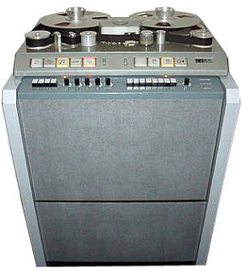 The engineering team then took all four filled tracks of the tape and created a reduction mix ("take eight") onto one track of another tape, slightly slowing down the recording to 49 cycles per second instead of the normal 50 cycles. This made the recording all set for overdubbing at a later date. At 2:15 am the following morning, the group and staff filed out to get some rest and prepare themselves for the next session later that evening. The engineering team then took all four filled tracks of the tape and created a reduction mix ("take eight") onto one track of another tape, slightly slowing down the recording to 49 cycles per second instead of the normal 50 cycles. This made the recording all set for overdubbing at a later date. At 2:15 am the following morning, the group and staff filed out to get some rest and prepare themselves for the next session later that evening.
 Once again starting at 7 pm, they all filed back into EMI Studio Two that evening (March 2nd, 1967) to perform overdubs for the song. Track one of the new master tape contained the rhythm track from the previous day, leaving three open tracks on the four-track tape to fill with overdubs. The first thing tackled was a vocal track by John and Paul for the song's choruses, Paul sometimes singing the lower melody line and other times singing a higher harmony to John's lower part. Once again starting at 7 pm, they all filed back into EMI Studio Two that evening (March 2nd, 1967) to perform overdubs for the song. Track one of the new master tape contained the rhythm track from the previous day, leaving three open tracks on the four-track tape to fill with overdubs. The first thing tackled was a vocal track by John and Paul for the song's choruses, Paul sometimes singing the lower melody line and other times singing a higher harmony to John's lower part.
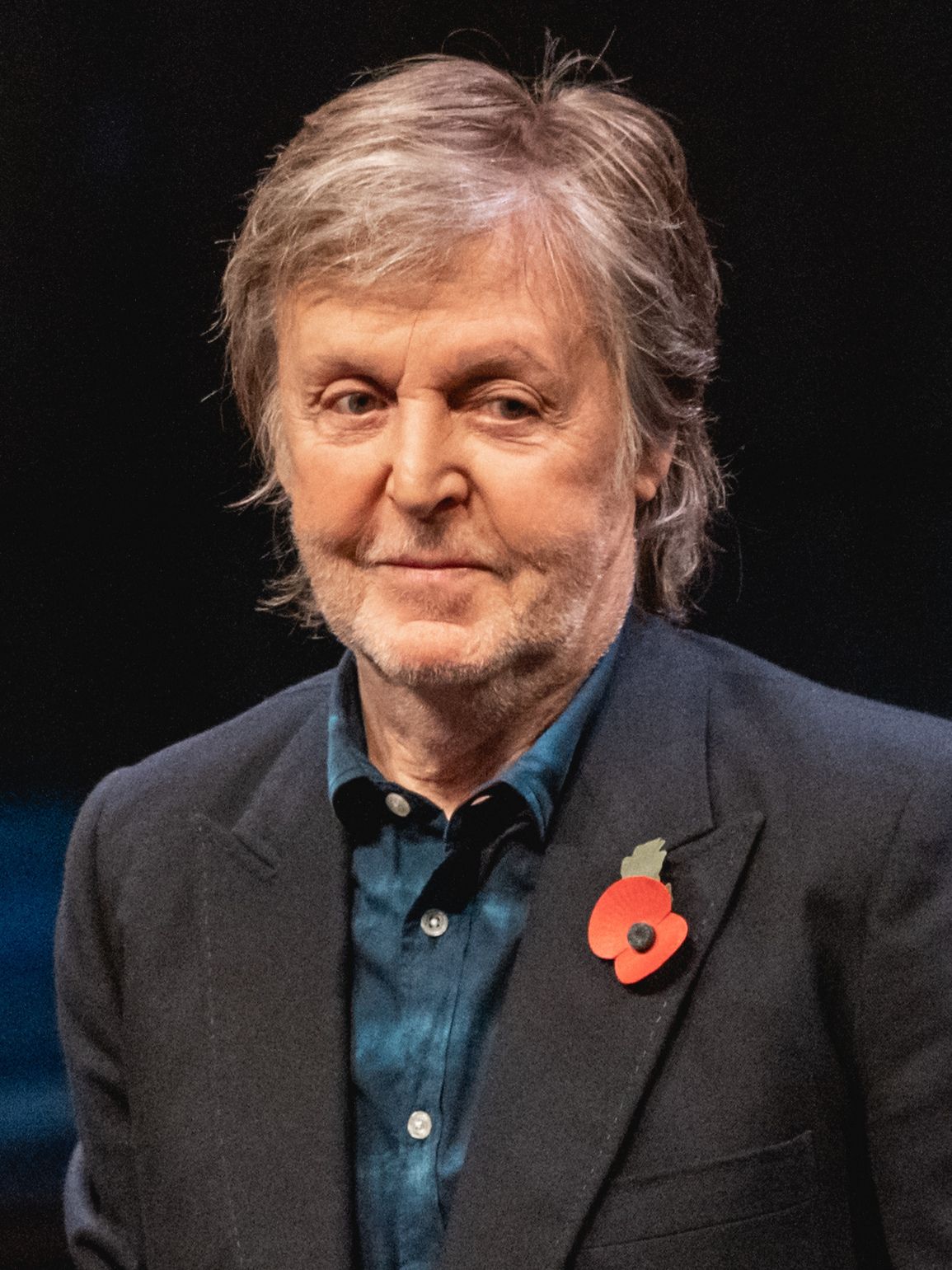 As revealed in the above mentioned "McCartney 3,2,1" documentary, Paul struggled to hit the proper high note at the end of the first chorus, the word "Aaaah" coming off as an unsavory screach that was corrected on the finished recording. "This is why we don't go into tapes," Paul said laughingly. This vocal overdub was taped at 45 cycles per second to make their voices have a slightly higher tone than usual when played back normally. Also, tape echo was added sporadically to create the intended spacey feel for the song. Onto track three, John double-tracked his lead vocals in strategic places, such as when “girl with kaleidoscope eyes” was heard. Paul added more backing vocals during the choruses on this same overdub, which was recorded at 48 1/2 cycles per second. As revealed in the above mentioned "McCartney 3,2,1" documentary, Paul struggled to hit the proper high note at the end of the first chorus, the word "Aaaah" coming off as an unsavory screach that was corrected on the finished recording. "This is why we don't go into tapes," Paul said laughingly. This vocal overdub was taped at 45 cycles per second to make their voices have a slightly higher tone than usual when played back normally. Also, tape echo was added sporadically to create the intended spacey feel for the song. Onto track three, John double-tracked his lead vocals in strategic places, such as when “girl with kaleidoscope eyes” was heard. Paul added more backing vocals during the choruses on this same overdub, which was recorded at 48 1/2 cycles per second.
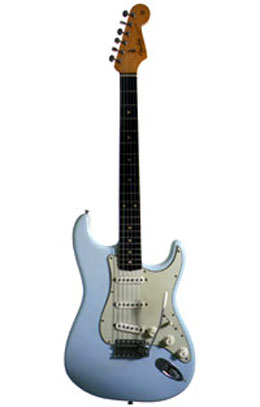 According to the “Beatles Recording Sessions” book, the final two elements deemed necessary for this song were overdubbed onto track four of the tape, this being Paul’s artistic bass performance and Harrison’s distorted lead guitar. However, since both of these elements are panned to different locations in the stereo mix, they must have been isolated onto different tracks. Harrison remembers: "There was another thing. During vocals in Indian music they have an instrument called a sarangi, which sounds like the human voice, and the vocalist and sarangi player are more or less in unison in a performance. For ‘Lucy’ I thought of trying that idea, but because I’m not a sarangi player I played it on the guitar. In the middle-eight of the song (‘cellophane flowers…’) you can hear the guitar playing along with John’s voice. I was trying to copy Indian classical music." According to the “Beatles Recording Sessions” book, the final two elements deemed necessary for this song were overdubbed onto track four of the tape, this being Paul’s artistic bass performance and Harrison’s distorted lead guitar. However, since both of these elements are panned to different locations in the stereo mix, they must have been isolated onto different tracks. Harrison remembers: "There was another thing. During vocals in Indian music they have an instrument called a sarangi, which sounds like the human voice, and the vocalist and sarangi player are more or less in unison in a performance. For ‘Lucy’ I thought of trying that idea, but because I’m not a sarangi player I played it on the guitar. In the middle-eight of the song (‘cellophane flowers…’) you can hear the guitar playing along with John’s voice. I was trying to copy Indian classical music."
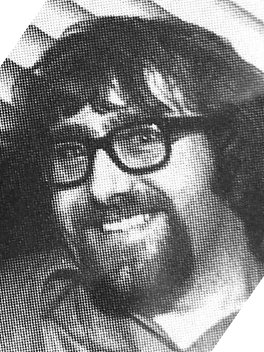 Geoff Emerick adds a bit of detail concerning the guitar overdub George recorded on this day: “We had decided to route George’s guitar through a Leslie speaker during the choruses, and because that reminded Lennon of the ‘Dalai Lama’ vocal effect we had used on ‘Tomorrow Never Knows,’ Mal (Evans) was duly dispatched to see if he could find a rope so John could try out his theory and be swung around a microphone. From the wink Mal (Evans) gave me when he returned some hours later – empty-handed – I suspect that he had spent the evening in the pub instead. He knew how absurd, and potentially dangerous, the request was, and he probably guessed that John would have forgotten all about it by the time he got back, which, of course, is exactly what happened.” Geoff Emerick adds a bit of detail concerning the guitar overdub George recorded on this day: “We had decided to route George’s guitar through a Leslie speaker during the choruses, and because that reminded Lennon of the ‘Dalai Lama’ vocal effect we had used on ‘Tomorrow Never Knows,’ Mal (Evans) was duly dispatched to see if he could find a rope so John could try out his theory and be swung around a microphone. From the wink Mal (Evans) gave me when he returned some hours later – empty-handed – I suspect that he had spent the evening in the pub instead. He knew how absurd, and potentially dangerous, the request was, and he probably guessed that John would have forgotten all about it by the time he got back, which, of course, is exactly what happened.”
 This final overdub completed the song, although The Beatles were anxious to create a usable mono mix of the recording that evening. Eleven attempts at a mono mix were made by George Martin and engineers Geoff Emerick and Richard Lush in the control room of EMI Studio Two, mix 11 being deemed best, but they apparently weren’t happy with this after some further thought and none of these mixes saw the light of day. At 3:30 am the following morning, they went home only to return about sixteen hours later. This final overdub completed the song, although The Beatles were anxious to create a usable mono mix of the recording that evening. Eleven attempts at a mono mix were made by George Martin and engineers Geoff Emerick and Richard Lush in the control room of EMI Studio Two, mix 11 being deemed best, but they apparently weren’t happy with this after some further thought and none of these mixes saw the light of day. At 3:30 am the following morning, they went home only to return about sixteen hours later.
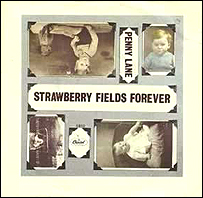 While using up nearly a total of twenty-four hours of studio time on a single song, this being divided up between three consecutive days, may sound like a lot, it was actually one of the quickest “Sgt. Pepper” recordings. Compared to “A Day In The Life” or “Penny Lane,” for instance, “Lucy In The Sky With Diamonds” was a breeze! While using up nearly a total of twenty-four hours of studio time on a single song, this being divided up between three consecutive days, may sound like a lot, it was actually one of the quickest “Sgt. Pepper” recordings. Compared to “A Day In The Life” or “Penny Lane,” for instance, “Lucy In The Sky With Diamonds” was a breeze!
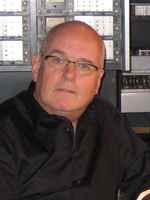 A new crack at creating the mono mix of the song was done that evening, March 3rd, 1967, in the control room of EMI Studio Two with the band present. After the brass and lead guitar overdubs for the "Sgt. Pepper” theme song had been recorded, this starting at 7 pm (as usual) and taking up most of the session this day, the group concentrated on getting the perfect mono mix for the recently recorded “Lucy.” Four new mono mixes were then created by George Martin and engineers Geoff Emerick and Richard Lush, presumably the fourth one being deemed the best. Extensive use of ADT was done with deliberate tape speed manipulation to create the psychedelic effect presented throughout the song, sometimes referred to as "flanging." By 2:15 am, the mono mix was complete and they all left for the night. A new crack at creating the mono mix of the song was done that evening, March 3rd, 1967, in the control room of EMI Studio Two with the band present. After the brass and lead guitar overdubs for the "Sgt. Pepper” theme song had been recorded, this starting at 7 pm (as usual) and taking up most of the session this day, the group concentrated on getting the perfect mono mix for the recently recorded “Lucy.” Four new mono mixes were then created by George Martin and engineers Geoff Emerick and Richard Lush, presumably the fourth one being deemed the best. Extensive use of ADT was done with deliberate tape speed manipulation to create the psychedelic effect presented throughout the song, sometimes referred to as "flanging." By 2:15 am, the mono mix was complete and they all left for the night.
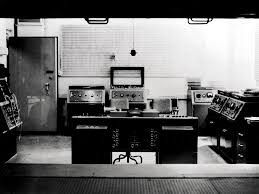 The stereo mix was later created on April 7th, 1967 in the EMI Studio Two control room by the same team of George Martin, Geoff Emerick and Richard Lush. “Just the three of us without a Beatle in sight,” explains Richard Lush about the stereo mixes for the entire “Sgt. Pepper” album. The stereo mix was later created on April 7th, 1967 in the EMI Studio Two control room by the same team of George Martin, Geoff Emerick and Richard Lush. “Just the three of us without a Beatle in sight,” explains Richard Lush about the stereo mixes for the entire “Sgt. Pepper” album.
 Five attempts at creating a stereo mix were made at this session, presumably the fifth being deemed the best. The rhythm track is panned exclusively into the left channel while the bass guitar and all of the vocals are centered in the mix. All of Harrison’s lead guitar overdub work was panned over to the right channel only. This time, however, the ADT was done more sparingly to give a little less psychedelic feel than the mono mix had, which is probably due to The Beatles not being present for this stereo mix. Five attempts at creating a stereo mix were made at this session, presumably the fifth being deemed the best. The rhythm track is panned exclusively into the left channel while the bass guitar and all of the vocals are centered in the mix. All of Harrison’s lead guitar overdub work was panned over to the right channel only. This time, however, the ADT was done more sparingly to give a little less psychedelic feel than the mono mix had, which is probably due to The Beatles not being present for this stereo mix.
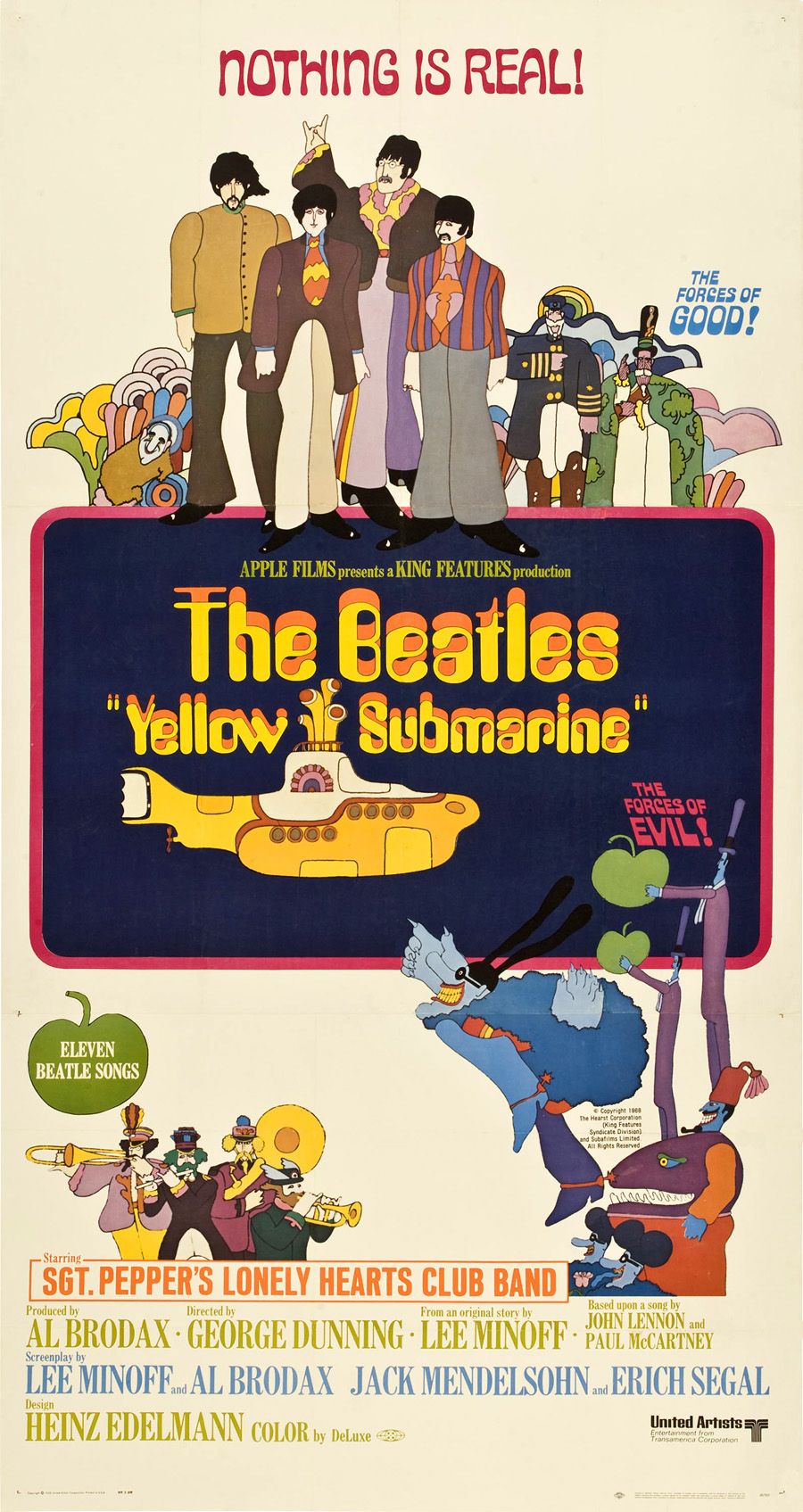 Interestingly, an additional mono mix was made on November 1st, 1967 in Room 53 of the EMI complex by the very same production staff of George Martin, Geoff Emerick and Richard Lush. This special mix was made for inclusion in the “Yellow Submarine” movie then being prepared. Unique features of this mix include lessened ADT and the omission of John’s lead vocals in the first part of the first verse, which was replaced by an actor’s recitation “Picture yourself just a nuclear fission with library cards under mystical skies…ha, ha, ha…Somebody quotes you, you read from a source book, a concept with microscope eyes…ha, ha, ha.” Luckily for all concerned, this strange mix did not make it into the film and was never officially released. Interestingly, an additional mono mix was made on November 1st, 1967 in Room 53 of the EMI complex by the very same production staff of George Martin, Geoff Emerick and Richard Lush. This special mix was made for inclusion in the “Yellow Submarine” movie then being prepared. Unique features of this mix include lessened ADT and the omission of John’s lead vocals in the first part of the first verse, which was replaced by an actor’s recitation “Picture yourself just a nuclear fission with library cards under mystical skies…ha, ha, ha…Somebody quotes you, you read from a source book, a concept with microscope eyes…ha, ha, ha.” Luckily for all concerned, this strange mix did not make it into the film and was never officially released.
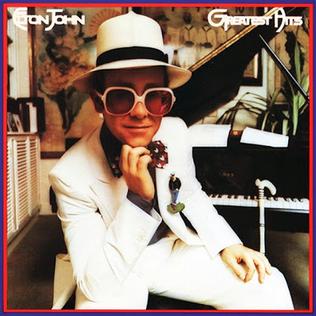 The year 1974 was the next time “Lucy” was taken to a recording studio by a Beatle. John Lennon (under the pseudonym Dr. Winston O'Boogie) joined Elton John at the Caribou Ranch recording studio in Nederland, Colorado to play rhythm guitar and sing backing vocals on Elton’s cover version of the song. The result was a highly successful single released during the height of Elton’s career. A live recording of the song was also done on November 28th, 1974 as John joined the Elton John Band on stage at Madison Square Garden in New York City. The year 1974 was the next time “Lucy” was taken to a recording studio by a Beatle. John Lennon (under the pseudonym Dr. Winston O'Boogie) joined Elton John at the Caribou Ranch recording studio in Nederland, Colorado to play rhythm guitar and sing backing vocals on Elton’s cover version of the song. The result was a highly successful single released during the height of Elton’s career. A live recording of the song was also done on November 28th, 1974 as John joined the Elton John Band on stage at Madison Square Garden in New York City.
 Sometime in 1995, George Martin and Geoff Emerick returned to EMI Studios (now Abbey Road Studios) to create a unique compilation mix of “Lucy” for inclusion in the “Anthology 2” album mentioned above. “Take six” was used as the bedrock of this new mix which featured John’s guide vocals and maracas, the obvious flaw here being Ringo’s drum count-in for the last chorus being noticeably too fast. An addition to this take was George’s tamboura playing from "take seven" and the harmony vocals from "take eight," although Paul’s bass playing was not added, which would have completed the sonic picture. Nonetheless, an interesting view of the song in progress is presented here. Sometime in 1995, George Martin and Geoff Emerick returned to EMI Studios (now Abbey Road Studios) to create a unique compilation mix of “Lucy” for inclusion in the “Anthology 2” album mentioned above. “Take six” was used as the bedrock of this new mix which featured John’s guide vocals and maracas, the obvious flaw here being Ringo’s drum count-in for the last chorus being noticeably too fast. An addition to this take was George’s tamboura playing from "take seven" and the harmony vocals from "take eight," although Paul’s bass playing was not added, which would have completed the sonic picture. Nonetheless, an interesting view of the song in progress is presented here.
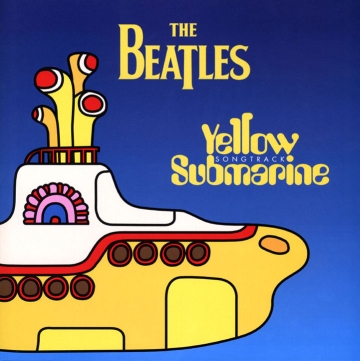 Sometime in 1998, the original session tapes of “Lucy” were raided once again to produce an updated stereo mix for the “Yellow Submarine Songtrack” album. This mix was put together at Abbey Road Studios by the team of Peter Cobbin, Paul Hicks, Mirek Stiles and Allan Rouse. The elements are somewhat similar to the 1967 stereo mix except for some interesting surprises. The first original tape used for the rhythm track must have been "synced up" with the second original tape because the drums are here centered in the mix while Paul’s Lowery organ part is panned exclusively to the left channel, something that was not then possible using just the second original tape since these tapes were both condensed down to the first track at that point. Another difference is a slight amount of reverb that has been added to the organ part, this being heard in the right channel only. All this being said, the clarity and vibrancy of this mix is incredible. Sometime in 1998, the original session tapes of “Lucy” were raided once again to produce an updated stereo mix for the “Yellow Submarine Songtrack” album. This mix was put together at Abbey Road Studios by the team of Peter Cobbin, Paul Hicks, Mirek Stiles and Allan Rouse. The elements are somewhat similar to the 1967 stereo mix except for some interesting surprises. The first original tape used for the rhythm track must have been "synced up" with the second original tape because the drums are here centered in the mix while Paul’s Lowery organ part is panned exclusively to the left channel, something that was not then possible using just the second original tape since these tapes were both condensed down to the first track at that point. Another difference is a slight amount of reverb that has been added to the organ part, this being heard in the right channel only. All this being said, the clarity and vibrancy of this mix is incredible.
 Since George Martin was such a big fan of this song, it was a shoe-in to be re-worked for the 2006 release “Love,” created especially for the Cirque du Soleil show of the same name. Sometime between 2004 and 2006, George and his son Giles Martin created a unique blend of the original recording with various elements of the songs “Tomorrow Never Knows,” the “Sgt. Pepper” theme song, and “Baby, You’re A Rich Man." Since George Martin was such a big fan of this song, it was a shoe-in to be re-worked for the 2006 release “Love,” created especially for the Cirque du Soleil show of the same name. Sometime between 2004 and 2006, George and his son Giles Martin created a unique blend of the original recording with various elements of the songs “Tomorrow Never Knows,” the “Sgt. Pepper” theme song, and “Baby, You’re A Rich Man."
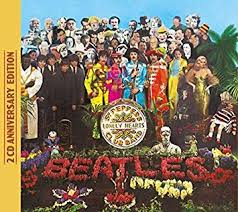 Then, sometime during 2016 or 2017, Giles Martin and engineer Sam Okell returned to all of the original session tapes of the song to create a new stereo mix patterned after the superior mono mix of 1967, this being included on the "50th Anniversary" release of "Sgt. Pepper." The seperation is more palatable for stereo listening and, like the original 1967 mono version, a bit more "flanging" is used throughout the song, especially noticeable on John's vocals. Giles Martin also thought to prepare two bonus tracks of outtakes from the "Lucy" sessions, "take five" appearing on the "2 CD Anniversary Edition" and "speech, false start and "take five," which appears only on the "Super Deluxe Edition" box set. Then, sometime during 2016 or 2017, Giles Martin and engineer Sam Okell returned to all of the original session tapes of the song to create a new stereo mix patterned after the superior mono mix of 1967, this being included on the "50th Anniversary" release of "Sgt. Pepper." The seperation is more palatable for stereo listening and, like the original 1967 mono version, a bit more "flanging" is used throughout the song, especially noticeable on John's vocals. Giles Martin also thought to prepare two bonus tracks of outtakes from the "Lucy" sessions, "take five" appearing on the "2 CD Anniversary Edition" and "speech, false start and "take five," which appears only on the "Super Deluxe Edition" box set.
Song Structure and Style
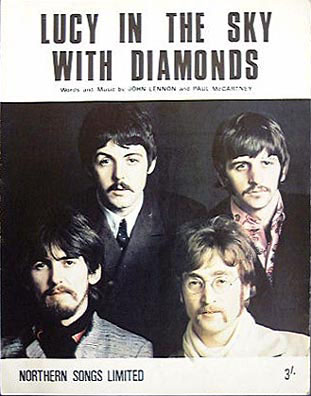 A rather usual structure consisting of verses, bridges and choruses are, in this case, combined with some pretty innovative tricks for a Lennon / McCartney song, such as key and time signature changes. While a rhythm change was creatively incorporated into “I Call Your Name” back in 1964, jarring you from the four-in-the-bar cowbell pound to a ‘reggae/ska’ beat in its instrumental section, the jumps and alterations premiered here in “Lucy” are quite startling for pop music of 1967. No wonder it stood out prominently on the “Sgt. Pepper” album. (A side note of interest is that the song was originally slated to end side one of the album, the proposed third track of the LP being “Being For The Benefit Of Mr. Kite.” My thought is that “Lucy” wouldn’t have had the same impact if it was kept in that order.) A rather usual structure consisting of verses, bridges and choruses are, in this case, combined with some pretty innovative tricks for a Lennon / McCartney song, such as key and time signature changes. While a rhythm change was creatively incorporated into “I Call Your Name” back in 1964, jarring you from the four-in-the-bar cowbell pound to a ‘reggae/ska’ beat in its instrumental section, the jumps and alterations premiered here in “Lucy” are quite startling for pop music of 1967. No wonder it stood out prominently on the “Sgt. Pepper” album. (A side note of interest is that the song was originally slated to end side one of the album, the proposed third track of the LP being “Being For The Benefit Of Mr. Kite.” My thought is that “Lucy” wouldn’t have had the same impact if it was kept in that order.)
The structure of this track consists of ‘verse/ bridge/ chorus/ verse/ bridge/ chorus/ verse/ chorus’ (or abcabcac) with an intro and faded outro. This sounds pretty ordinary, doesn’t it? Think again.
 Starting off the song with a 3/4 meter in the key of A major, a four-measure intro begins the song, this consisting of a clever ostinato figure played by Paul on a Lowery organ. “It’s a most wonderful phrase,” George Martin commented. “I think, you know, if Beethoven was around, he wouldn’t have minded one of those.” Starting off the song with a 3/4 meter in the key of A major, a four-measure intro begins the song, this consisting of a clever ostinato figure played by Paul on a Lowery organ. “It’s a most wonderful phrase,” George Martin commented. “I think, you know, if Beethoven was around, he wouldn’t have minded one of those.”
 This intro moves directly into the first verse which is made up of two nearly identical melody lines sung solo by John interspersed within nineteen measures (nine for the first phrase, ten for the second phrase). The organ ostinato figure continues as heard in the introduction, while simple whole-note bass work appears with John’s vocal for the first seven measures. Then the eighth and ninth measures bring in a somewhat more intricate bass run on top of a changed organ part, accented dramatically by the first appearance of Ringo on the hi-hat and kick drum. George’s tamboura first appears quietly in the ninth measure, gradually increasing in volume for the remainder of the verse. John’s vocals are double-tracked for the first time starting on the fourteenth measure on the line “the girl with kaleidoscope eyes,” while Ringo emerges once again in the sixteenth measure with cymbal accents and bass drum which continue through until the end of the verse. The bass picks up the pace once again in the sixteenth through nineteenth measures as the organ performance again changes shape. This intro moves directly into the first verse which is made up of two nearly identical melody lines sung solo by John interspersed within nineteen measures (nine for the first phrase, ten for the second phrase). The organ ostinato figure continues as heard in the introduction, while simple whole-note bass work appears with John’s vocal for the first seven measures. Then the eighth and ninth measures bring in a somewhat more intricate bass run on top of a changed organ part, accented dramatically by the first appearance of Ringo on the hi-hat and kick drum. George’s tamboura first appears quietly in the ninth measure, gradually increasing in volume for the remainder of the verse. John’s vocals are double-tracked for the first time starting on the fourteenth measure on the line “the girl with kaleidoscope eyes,” while Ringo emerges once again in the sixteenth measure with cymbal accents and bass drum which continue through until the end of the verse. The bass picks up the pace once again in the sixteenth through nineteenth measures as the organ performance again changes shape.
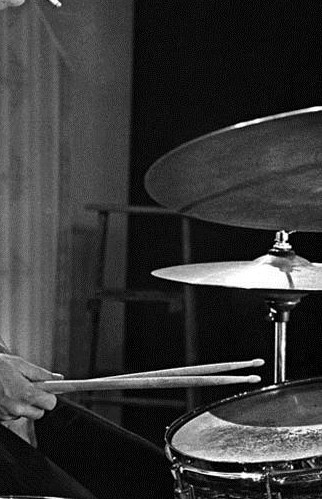 The tamboura instantly disappears from view as the song's key changes to B flat in the nine-measure bridge that comes next. John’s vocals are single-tracked once again and primarily hold out a single note for the entire nine measures, highlighted by a lazily delivered downward spiraling “heeeaaad” in the seventh and eighth measures while Ringo taps out a constant cymbal and kick drum beat throughout. Paul plays more busily on bass but his organ part fades away during the entire bridge. George mimics John’s vocal melody line on lead guitar to fill the absence left by the organ. Suddenly in the eighth measure, on the word “gone,” the time signature changes to 4/4 as Ringo pounds out three half-notes by himself to usher in the chorus that follows. The tamboura instantly disappears from view as the song's key changes to B flat in the nine-measure bridge that comes next. John’s vocals are single-tracked once again and primarily hold out a single note for the entire nine measures, highlighted by a lazily delivered downward spiraling “heeeaaad” in the seventh and eighth measures while Ringo taps out a constant cymbal and kick drum beat throughout. Paul plays more busily on bass but his organ part fades away during the entire bridge. George mimics John’s vocal melody line on lead guitar to fill the absence left by the organ. Suddenly in the eighth measure, on the word “gone,” the time signature changes to 4/4 as Ringo pounds out three half-notes by himself to usher in the chorus that follows.
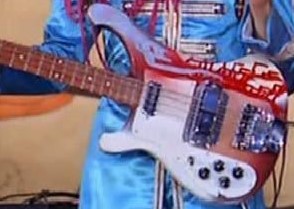 The 4/4 beat continues on into the startling fourteen-measure chorus which begins with Paul debuting the song’s title vocally with John joining him in unison before the title is complete. They both then sing the title in unison fully a second time around, the third time Paul jumping into a higher harmony to add a noticeable amount of variance to the arrangement, which alters the proceedings with a harmonized “aah” to segue into another verse with its resultant key and time signature change. Instrumentally, the organ reappears with chord chops on the three-beat of every measure while Harrison and McCartney both perform a nearly identical counter melody line on a "Leslie-fied" electric guitar and bass, respectively. Ringo plays his full kit for the first time throughout, the chorus ending with the bass bouncing back-and-forth between two notes as the organ holds out a transitional chord designed to take us back to the verse. The 4/4 beat continues on into the startling fourteen-measure chorus which begins with Paul debuting the song’s title vocally with John joining him in unison before the title is complete. They both then sing the title in unison fully a second time around, the third time Paul jumping into a higher harmony to add a noticeable amount of variance to the arrangement, which alters the proceedings with a harmonized “aah” to segue into another verse with its resultant key and time signature change. Instrumentally, the organ reappears with chord chops on the three-beat of every measure while Harrison and McCartney both perform a nearly identical counter melody line on a "Leslie-fied" electric guitar and bass, respectively. Ringo plays his full kit for the first time throughout, the chorus ending with the bass bouncing back-and-forth between two notes as the organ holds out a transitional chord designed to take us back to the verse.
 Verse two is identical in most respects, Lennon’s double-tracked vocal first appearing on the lyric “that grows so incredibly high,” ending with an unusual “ugh” at the beginning of the nineteenth measure, possibly a remnant of a previous vocal take (this heard only on the original 1967 stereo mix). One noticeable difference in this verse is the tamboura drone which actually permeates the entire nineteen measures. This is then followed by a second bridge which is structured similarly to the first except for different lyrics. Verse two is identical in most respects, Lennon’s double-tracked vocal first appearing on the lyric “that grows so incredibly high,” ending with an unusual “ugh” at the beginning of the nineteenth measure, possibly a remnant of a previous vocal take (this heard only on the original 1967 stereo mix). One noticeable difference in this verse is the tamboura drone which actually permeates the entire nineteen measures. This is then followed by a second bridge which is structured similarly to the first except for different lyrics.
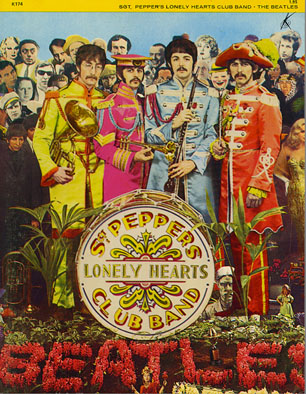 Another chorus follows afterward but with only subtle differences from what was heard in the first, one being Paul’s higher harmony heard with all three repeats of the song's title this time around instead of just the last. Also, George’s lead guitar phrase stops short the first time, leaving the third and fourth measures sounding a little bare. Another chorus follows afterward but with only subtle differences from what was heard in the first, one being Paul’s higher harmony heard with all three repeats of the song's title this time around instead of just the last. Also, George’s lead guitar phrase stops short the first time, leaving the third and fourth measures sounding a little bare.
A third verse then appears, this one having some more noticeable differences from the others. Paul gets much more adventurous on bass, playing some more fragrant runs to fill the gaps this time around. Most strikingly, since there is no bridge at the end of this verse, the final two measures abruptly switch to 4/4 time with Ringo’s pounding intro beats, seemingly edited at this point to accommodate the uncharacteristic chord change and to get the timing correct (as evidenced by Ringo’s sped up drum beats here in "take six" as heard on “Anthology 2”).
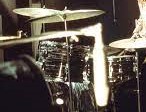 The final chorus is now heard, this time in a more symmetrical sixteen measures due to it not segueing back into a verse anymore. Paul accidentally sings the first syllable of the first “Lucy” in his higher harmony but afterward quickly corrects himself to sing unison with John for the remainder of the line. The second repeat of the song’s title puts Paul back into harmony where he stays for the remainder of the song. Instrumentally, the elements are all identical to the previous choruses, however the tamboura swells are particularly accentuated during the final four measures. McCartney’s organ chords begin to adlib a little more as does his overdubbed bass playing, while Ringo flails away triumphantly at times on his cymbals and toms. The final chorus is now heard, this time in a more symmetrical sixteen measures due to it not segueing back into a verse anymore. Paul accidentally sings the first syllable of the first “Lucy” in his higher harmony but afterward quickly corrects himself to sing unison with John for the remainder of the line. The second repeat of the song’s title puts Paul back into harmony where he stays for the remainder of the song. Instrumentally, the elements are all identical to the previous choruses, however the tamboura swells are particularly accentuated during the final four measures. McCartney’s organ chords begin to adlib a little more as does his overdubbed bass playing, while Ringo flails away triumphantly at times on his cymbals and toms.
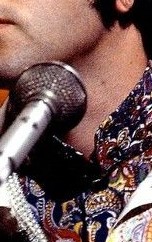 This final chorus is then repeated two more times which acts as the conclusion, or outro, of the released song. It begins fading as early as the seventh measure of the second repeat of this chorus, although the fading apears to level off during the song's final two measures (or “aah”) of the second repeat of the chorus. The organ even begins playing a quick staccato beat with the chords in the tenth and eleventh measures. This final chorus is then repeated two more times which acts as the conclusion, or outro, of the released song. It begins fading as early as the seventh measure of the second repeat of this chorus, although the fading apears to level off during the song's final two measures (or “aah”) of the second repeat of the chorus. The organ even begins playing a quick staccato beat with the chords in the tenth and eleventh measures.
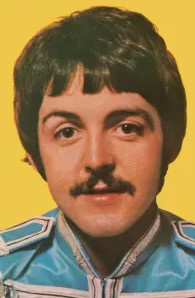 More adlibbing occurs during the repeat of the final chorus, both the overdubbed bass and lead guitar reaching beyond the boundaries of their usual patterns in measures three and four. The bass repeats its same higher register meandering in the seventh and eighth measures while Paul utters an excited “uh” just before he and John sing the final repeat of the song’s title, this then resulting in the track melding right into the horizon of the “marmalade skies.” More adlibbing occurs during the repeat of the final chorus, both the overdubbed bass and lead guitar reaching beyond the boundaries of their usual patterns in measures three and four. The bass repeats its same higher register meandering in the seventh and eighth measures while Paul utters an excited “uh” just before he and John sing the final repeat of the song’s title, this then resulting in the track melding right into the horizon of the “marmalade skies.”
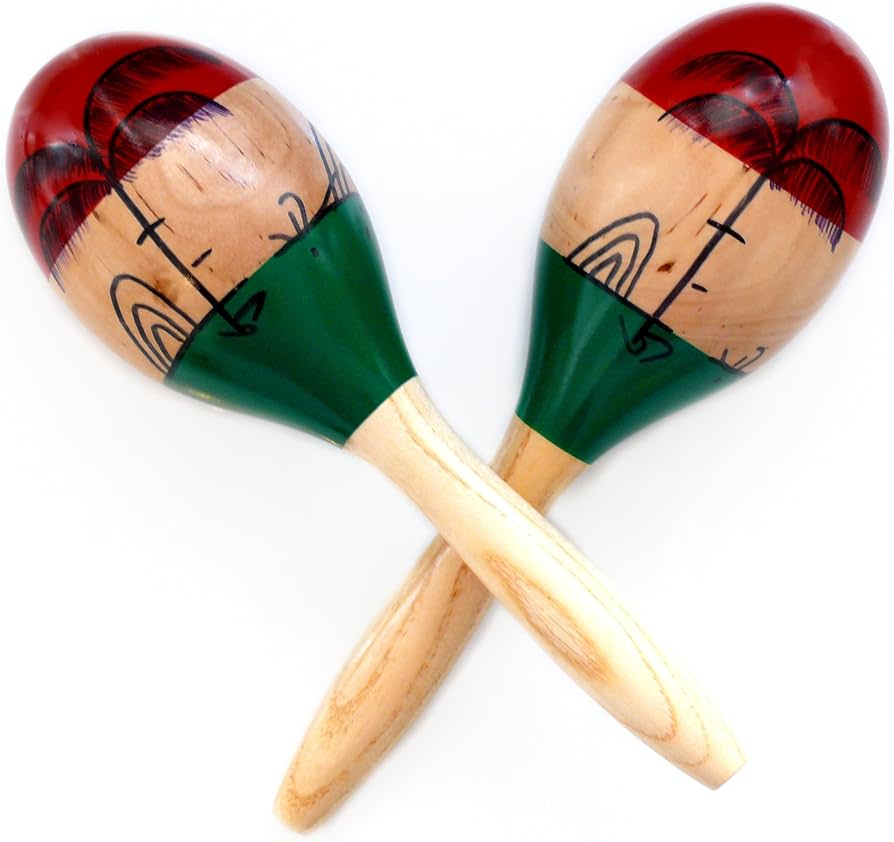 John makes a somewhat backseat appearance on the song instrumentally, his maracas from the rhythm track being the only instrument actually played by him in the song. However, this doesn’t deter us from recognizing John Lennon as "commander and chief" of this song, his sped-up lead vocals taking center-stage in order to capture the listener in his lyrical dreamy and picturesque landscape. John makes a somewhat backseat appearance on the song instrumentally, his maracas from the rhythm track being the only instrument actually played by him in the song. However, this doesn’t deter us from recognizing John Lennon as "commander and chief" of this song, his sped-up lead vocals taking center-stage in order to capture the listener in his lyrical dreamy and picturesque landscape.
 McCartney plays a very impressive supporting role instrumentally that, when examined, shows him as the principle player as well as director of the piece, as we witnessed in the released early takes of the song. His gripping organ phrase (undoubtedly constructed by him) creates a hypnotic effect that recurs periodically while he rounds out his keyboard performance in the choruses simply but effectively. McCartney's bass playing punctuates the song's multiple segments appropriately, while his vocal parts in the choruses are performed energetic and effortlessly. McCartney plays a very impressive supporting role instrumentally that, when examined, shows him as the principle player as well as director of the piece, as we witnessed in the released early takes of the song. His gripping organ phrase (undoubtedly constructed by him) creates a hypnotic effect that recurs periodically while he rounds out his keyboard performance in the choruses simply but effectively. McCartney's bass playing punctuates the song's multiple segments appropriately, while his vocal parts in the choruses are performed energetic and effortlessly.
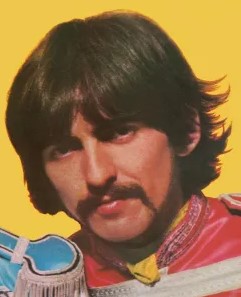 Paul may have commented in 1980 that Harrison wasn’t around very much during the “Sgt. Pepper” sessions, but he definitely made his presence felt on “Lucy.” He was correct in thinking that the tamboura drone would add nicely to the atmosphere desired for the song, his playing on the rhythm track fitting in perfectly. His lead guitar mimicking of the vocal track in the bridges is done very well as are his melodic lines in the choruses as played in unison with Paul’s bass. Paul may have commented in 1980 that Harrison wasn’t around very much during the “Sgt. Pepper” sessions, but he definitely made his presence felt on “Lucy.” He was correct in thinking that the tamboura drone would add nicely to the atmosphere desired for the song, his playing on the rhythm track fitting in perfectly. His lead guitar mimicking of the vocal track in the bridges is done very well as are his melodic lines in the choruses as played in unison with Paul’s bass.
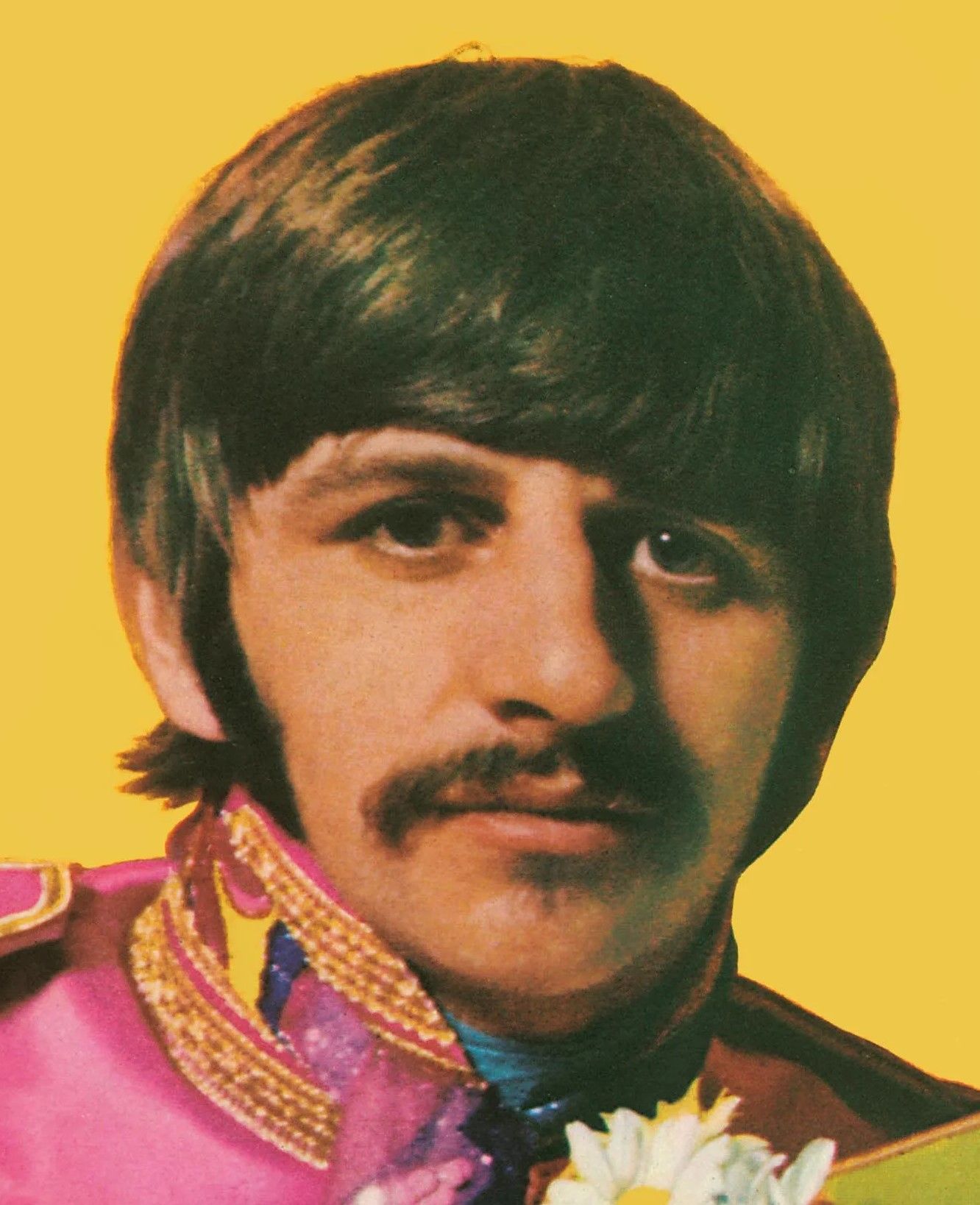 Ringo has often stated that his recollection of the “Sgt. Pepper” sessions was that he “learned how to play chess.” However, he must have packed away his chessboard on this day because he played with much enthusiasm and vigor, thus resulting in a fine example of what Ringo could do with the proper inspiration – his playing showed he really liked this one! Ringo has often stated that his recollection of the “Sgt. Pepper” sessions was that he “learned how to play chess.” However, he must have packed away his chessboard on this day because he played with much enthusiasm and vigor, thus resulting in a fine example of what Ringo could do with the proper inspiration – his playing showed he really liked this one!
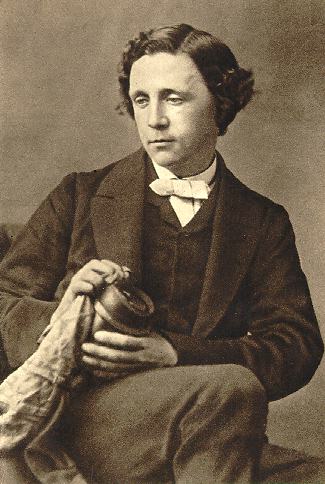 Lyrically, the overall Lewis Carroll theme was taken into the hallucinogenic atmosphere of Lennon and McCartney’s collective consciousness at the time, resulting in a vast array of images that they must have really enjoyed putting together – an expanded form of lyric writing that neither had done before in songwriting but were very comfortable with. Wouldn’t we all have loved to be a "fly on the wall" to witness the apparent fun they must have had piecing this lyrical vision together! Lyrically, the overall Lewis Carroll theme was taken into the hallucinogenic atmosphere of Lennon and McCartney’s collective consciousness at the time, resulting in a vast array of images that they must have really enjoyed putting together – an expanded form of lyric writing that neither had done before in songwriting but were very comfortable with. Wouldn’t we all have loved to be a "fly on the wall" to witness the apparent fun they must have had piecing this lyrical vision together!
 The listener is first asked to imagine himself “in a boat on a river” that somehow presents itself with “tangerine trees” growing out of the water. Then, under the “marmalade skies,” we can hear a voice of a mysterious woman that appears whose eyes are described both as “kaleidoscope eyes” and as “with the sun in her eyes.” When she speaks “you answer quite slowly,” which perfectly describes the slow-motion experience of dreams we all can relate to. The listener is first asked to imagine himself “in a boat on a river” that somehow presents itself with “tangerine trees” growing out of the water. Then, under the “marmalade skies,” we can hear a voice of a mysterious woman that appears whose eyes are described both as “kaleidoscope eyes” and as “with the sun in her eyes.” When she speaks “you answer quite slowly,” which perfectly describes the slow-motion experience of dreams we all can relate to.
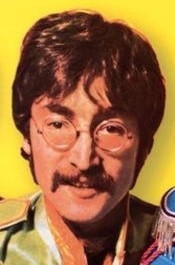 Apart from all the trees growing out of the water, there are also huge and colorful “cellophane flowers” that are “towering over your head.” The listener then strains to peer through those “marmalade skies” to see the woman but, alas, “she’s gone.” Nonetheless, you instinctively know her identity somehow. Her name is “Lucy In The Sky With Diamonds.” While still in your boat, she then comes into view in the sky and you “follow her down to a bridge by a fountain.” As the boat floats under the bridge, you notice the population of this incredible town. They comprise “rocking horse people” who “eat marshmallow pies.” Despite their limited food supply, they are quite hospitable – “everyone smiles.” Apart from all the trees growing out of the water, there are also huge and colorful “cellophane flowers” that are “towering over your head.” The listener then strains to peer through those “marmalade skies” to see the woman but, alas, “she’s gone.” Nonetheless, you instinctively know her identity somehow. Her name is “Lucy In The Sky With Diamonds.” While still in your boat, she then comes into view in the sky and you “follow her down to a bridge by a fountain.” As the boat floats under the bridge, you notice the population of this incredible town. They comprise “rocking horse people” who “eat marshmallow pies.” Despite their limited food supply, they are quite hospitable – “everyone smiles.”
 As this boat continues to “drift past” the “incredibly high” aforementioned flowers (these flowers probably not being the only things that are “incredibly high,” right John?), you finally approach the shore of the river. The listener also sees “newspaper taxis” that are purposely there “waiting to take you away.” You exit the boat and “climb in the back” of the cab with your head metaphysically “in the clouds” while the driver then takes off, that is to say, “you’re gone.” As this boat continues to “drift past” the “incredibly high” aforementioned flowers (these flowers probably not being the only things that are “incredibly high,” right John?), you finally approach the shore of the river. The listener also sees “newspaper taxis” that are purposely there “waiting to take you away.” You exit the boat and “climb in the back” of the cab with your head metaphysically “in the clouds” while the driver then takes off, that is to say, “you’re gone.”
 The next thing you know, the taxi must have dropped you off at a train depot where you boarded “a train in a station” with very strange-looking attendants. The porters are made of “plasticine” and are wearing “looking glass ties.” But before train leaves, you happily see “Lucy,” the mysterious woman that led you here, “at the turnstile” of the train station. She apparently has appeared to see you off as the train is about to take you on another incredible adventure. Can’t wait for the sequel! The next thing you know, the taxi must have dropped you off at a train depot where you boarded “a train in a station” with very strange-looking attendants. The porters are made of “plasticine” and are wearing “looking glass ties.” But before train leaves, you happily see “Lucy,” the mysterious woman that led you here, “at the turnstile” of the train station. She apparently has appeared to see you off as the train is about to take you on another incredible adventure. Can’t wait for the sequel!
American Releases
America got its first taste of “Lucy” on June 2nd, 1967, with the release of the album “Sgt. Pepper’s Lonely Hearts Club Band.” The irresistible texturing of this track undoubtedly played a big part in it maintaining the top spot of the Billboard album chart for fifteen weeks in a row. Vinyl pressings of the album have continued to be reissued in the US through the years.
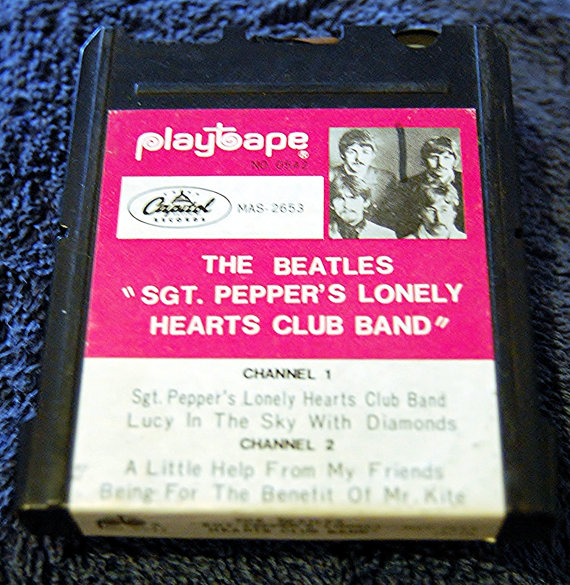 Sometime in 1967, Capitol Records released Beatles music on a brand new but short-lived format called "Playtapes." These tapes did not have the capability of including entire albums, so a four-song version of the "Sgt. Pepper" LP was released in this portable format, "Lucy In The Sky With Diamonds" being one of the four songs on this tape. These "Playtapes" are highly collectable today. Sometime in 1967, Capitol Records released Beatles music on a brand new but short-lived format called "Playtapes." These tapes did not have the capability of including entire albums, so a four-song version of the "Sgt. Pepper" LP was released in this portable format, "Lucy In The Sky With Diamonds" being one of the four songs on this tape. These "Playtapes" are highly collectable today.
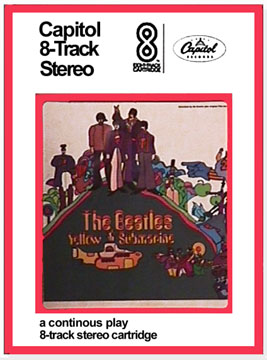 Interestingly, the US cassette and 8-track releases of "Yellow Submarine" that came out in 1969 contained "Lucy In The Sky With Diamonds" as a bonus track for the purpose of filling out all of the running times of the songs evenly on the tapes. Since "Lucy" was featured prominently in the film, and this was a soundtrack for the film, it was an appropriate song to include with this release. Interestingly, the US cassette and 8-track releases of "Yellow Submarine" that came out in 1969 contained "Lucy In The Sky With Diamonds" as a bonus track for the purpose of filling out all of the running times of the songs evenly on the tapes. Since "Lucy" was featured prominently in the film, and this was a soundtrack for the film, it was an appropriate song to include with this release.
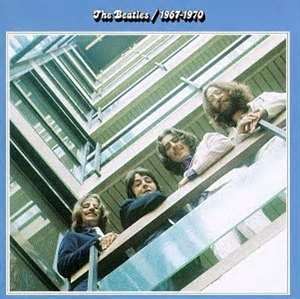 Although not released as a single at the time, "Lucy In The Sky With Diamonds" was noteworthy enough to be one of the four “Sgt. Pepper” tracks to make it onto the double-album compilation “The Beatles/1967-1970” (“The Blue Album”). The initial release of this set was on April 2nd, 1973, its first appearance on compact disc coming out on September 20th, 1993. This set was then remastered and re-released on August 10th, 2010. Although not released as a single at the time, "Lucy In The Sky With Diamonds" was noteworthy enough to be one of the four “Sgt. Pepper” tracks to make it onto the double-album compilation “The Beatles/1967-1970” (“The Blue Album”). The initial release of this set was on April 2nd, 1973, its first appearance on compact disc coming out on September 20th, 1993. This set was then remastered and re-released on August 10th, 2010.
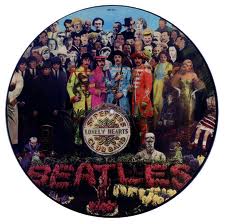 A special re-release of the vinyl “Sgt. Pepper” album came out in 1978 as a picture disc, the elaborate front cover being the a-side and a blow-up of the “Pepper” drum head being the b-side. Then, on December 15th, 2017, Capitol re-released the picture disc of the album yet again, this time using the new Giles Martin stereo mix and pressing it on 180 Gram Vinyl. Both of these were limited edition releases. A special re-release of the vinyl “Sgt. Pepper” album came out in 1978 as a picture disc, the elaborate front cover being the a-side and a blow-up of the “Pepper” drum head being the b-side. Then, on December 15th, 2017, Capitol re-released the picture disc of the album yet again, this time using the new Giles Martin stereo mix and pressing it on 180 Gram Vinyl. Both of these were limited edition releases.
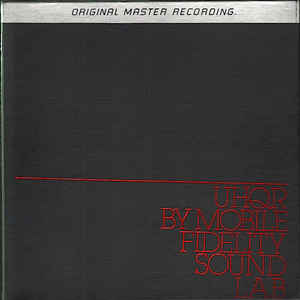 Two interesting American vinyl reissues of the “Sgt. Pepper” album were released as "Original Master Recording" editions made available through Mobile Fidelity Sound Lab. The edition released sometime in September of 1982 (with matrix # UHQR "Ultra High Quality Recording" 1-100) listed for $40 per copy, more than five times the cost of the standard version, and was then limited to 5000 sequentially numbered copies that weighed 200 grams (double the weight of conventional vinyl at that time) and were packaged between layers of protective foam rubber in a thick box. The second edition from Mobile Fidelity Sound Lab was released in June of 1983 similar to the rest of the Beatles catalog released within their series. Both of these were prepared utilizing half-speed mastering technology from the original master tape on loan from EMI. These versions of “Sgt. Pepper” were only available for a short time and are quite collectible today. Two interesting American vinyl reissues of the “Sgt. Pepper” album were released as "Original Master Recording" editions made available through Mobile Fidelity Sound Lab. The edition released sometime in September of 1982 (with matrix # UHQR "Ultra High Quality Recording" 1-100) listed for $40 per copy, more than five times the cost of the standard version, and was then limited to 5000 sequentially numbered copies that weighed 200 grams (double the weight of conventional vinyl at that time) and were packaged between layers of protective foam rubber in a thick box. The second edition from Mobile Fidelity Sound Lab was released in June of 1983 similar to the rest of the Beatles catalog released within their series. Both of these were prepared utilizing half-speed mastering technology from the original master tape on loan from EMI. These versions of “Sgt. Pepper” were only available for a short time and are quite collectible today.
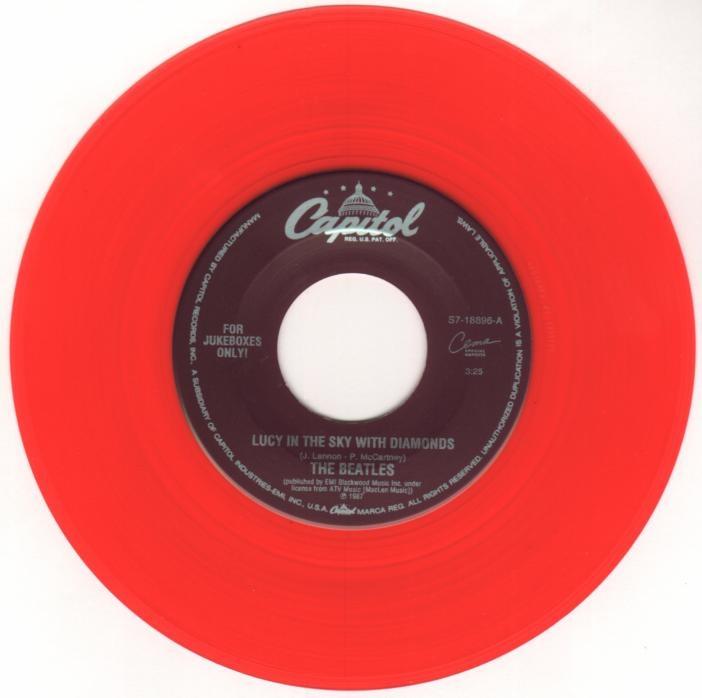 The first appearance of “Lucy” on CD, however, was on September 21st, 1987 on the “Sgt. Pepper” album. The remastered release of the compact disc was released on September 9th, 2009. The first appearance of “Lucy” on CD, however, was on September 21st, 1987 on the “Sgt. Pepper” album. The remastered release of the compact disc was released on September 9th, 2009.
On January 24th, 1996, “Lucy” was released as a single for the first and only time by The Beatles. Capitol put it out as an a-side (with “When I’m Sixty-Four” as the b-side) on their “For Jukeboxes Only” Cema Series on red vinyl. This release was a limited edition pressing that is another one for the collector to find and hold on to.
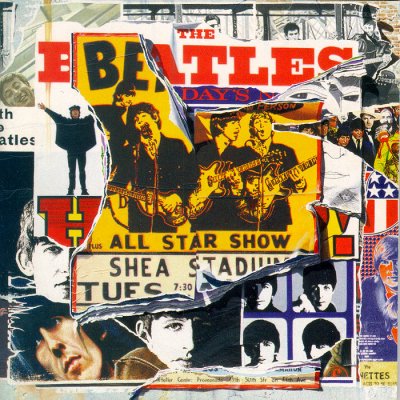 A couple of months afterwards, March 18th, 1996, the early studio take of “Lucy” detailed above was released on the compilation set “Anthology 2.” What we witness here is the complete "take six" with the tamboura drone of "take seven" along with the overdubbed harmonies of "take eight" added on. This is a very interesting listen! A couple of months afterwards, March 18th, 1996, the early studio take of “Lucy” detailed above was released on the compilation set “Anthology 2.” What we witness here is the complete "take six" with the tamboura drone of "take seven" along with the overdubbed harmonies of "take eight" added on. This is a very interesting listen!
The newly created 1998 mix of "Lucy," as described above, appeared on the September 13th, 1999 released album "Yellow Submarine Songtrack."
November 20th, 2006 was the release date for the above mentioned album “Love,” created entirely with the Cirque du Soleil show in mind, and featuring an incredibly unique mix of “Lucy.”
 September 9th, 2009 is the date that the interesting mono mix of “Lucy” was released on compact disc in the extensive box set “The Beatles In Mono,” the vinyl edition coming out on September 9th, 2014. Since The Beatles were also involved in making this mix, most fans view this as a "must have" for their collection – hear it like they wanted you to hear it! September 9th, 2009 is the date that the interesting mono mix of “Lucy” was released on compact disc in the extensive box set “The Beatles In Mono,” the vinyl edition coming out on September 9th, 2014. Since The Beatles were also involved in making this mix, most fans view this as a "must have" for their collection – hear it like they wanted you to hear it!
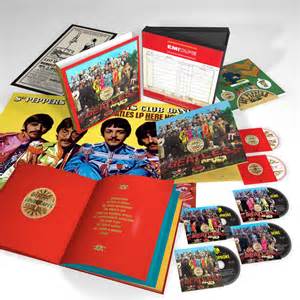 If you want to listen to this song like they wanted you to hear it but in stereo, now you can! The 50th Anniversary edition of the "Sgt. Pepper" album was released on May 26th, 2017, which consists of a newly mixed stereo version of the entire album patterned after the original 1967 mono mix, created by Giles Martin and Sam Okell. The "Super Deluxe Edition" box set includes both "take one" and "speech, false start and take five" as well, the later track also included within the "2 CD Anniversary Edition." If you want to listen to this song like they wanted you to hear it but in stereo, now you can! The 50th Anniversary edition of the "Sgt. Pepper" album was released on May 26th, 2017, which consists of a newly mixed stereo version of the entire album patterned after the original 1967 mono mix, created by Giles Martin and Sam Okell. The "Super Deluxe Edition" box set includes both "take one" and "speech, false start and take five" as well, the later track also included within the "2 CD Anniversary Edition."
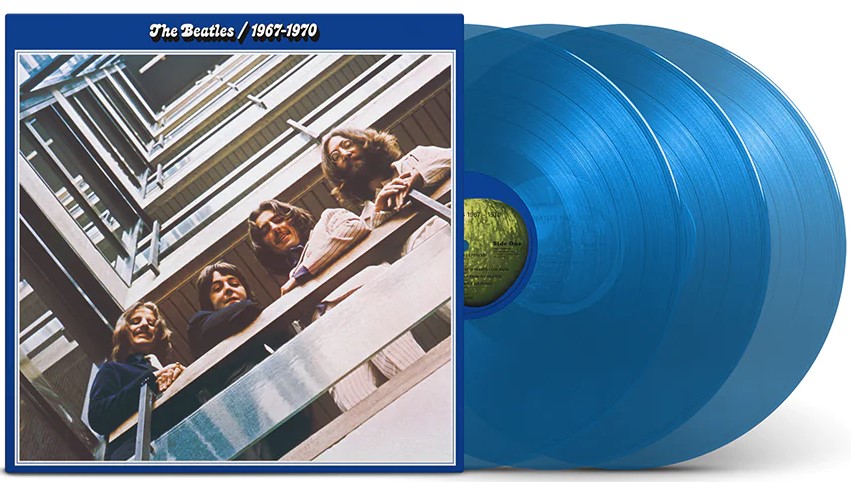 A new 50th Anniversay edition of the compilation album "The Beatles / 1967 - 1970" ("The Blue Album") was released on November 10th, 2023, the Giles Martin stereo mix of "Lucy In The Sky With Diamonds" as detailed above included here. This expanded set included 12 additional songs for a total of 38 tracks, and was made available as a double compact disc and as a triple vinyl release on both black and blue vinyl. A new 50th Anniversay edition of the compilation album "The Beatles / 1967 - 1970" ("The Blue Album") was released on November 10th, 2023, the Giles Martin stereo mix of "Lucy In The Sky With Diamonds" as detailed above included here. This expanded set included 12 additional songs for a total of 38 tracks, and was made available as a double compact disc and as a triple vinyl release on both black and blue vinyl.
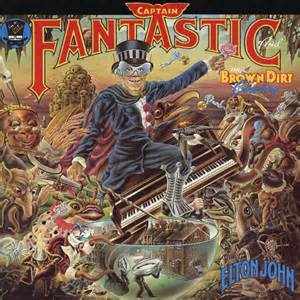 Other noteworthy releases of the song definitaley includes the November 19th, 1974 released hit single by Elton John featuring John (Dr. Winston O-Boogie) on rhythm guitar and background vocals. It spent two weeks at #1 on the Billboard Hot 100 in January of 1975, making this the only Beatles cover version to top the US Billboard charts. This version of the song also appears on the album “Elton John’s Greatest Hits Volume II” (released on September 13th, 1977) and as a bonus track on the 1995 and 2005 CD releases of Elton’s album “Captain Fantastic And The Brown Dirt Cowboy.” Other noteworthy releases of the song definitaley includes the November 19th, 1974 released hit single by Elton John featuring John (Dr. Winston O-Boogie) on rhythm guitar and background vocals. It spent two weeks at #1 on the Billboard Hot 100 in January of 1975, making this the only Beatles cover version to top the US Billboard charts. This version of the song also appears on the album “Elton John’s Greatest Hits Volume II” (released on September 13th, 1977) and as a bonus track on the 1995 and 2005 CD releases of Elton’s album “Captain Fantastic And The Brown Dirt Cowboy.”
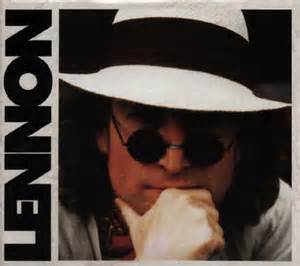 A special live performance of this song by Lennon with Elton John’s band was released four times in the US, the first on October 30th, 1990 on the four CD box set “Lennon.” Then in 1995, this interesting live version had three releases, the first being as a bonus track on the CD of Elton’s live album “Here And There," then as the b-side of the vinyl edition of Elton's single "Made In England," and finally as an added track on the CD single of the same Elton John release. A special live performance of this song by Lennon with Elton John’s band was released four times in the US, the first on October 30th, 1990 on the four CD box set “Lennon.” Then in 1995, this interesting live version had three releases, the first being as a bonus track on the CD of Elton’s live album “Here And There," then as the b-side of the vinyl edition of Elton's single "Made In England," and finally as an added track on the CD single of the same Elton John release.
Live Performances
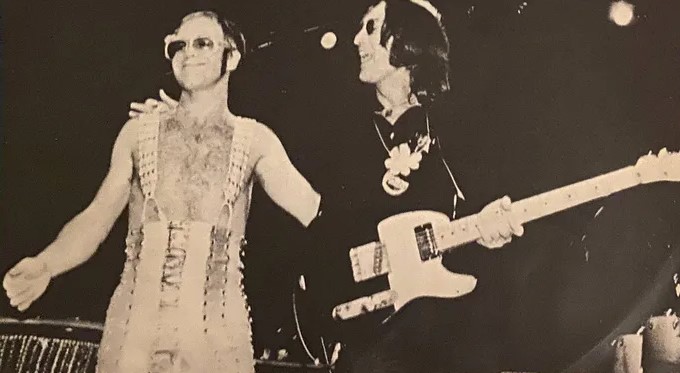 The Beatles, of course, never performed “Lucy” live on stage, but one Beatle, as outlined above, did perform the song on one special occasion. It was Thanksgiving day, November 28th, 1974, at Madison Square Garden in New York City that John Lennon came on stage at a concert by Elton John and performed three songs: “Whatever Gets You Thru The Night” (the Billboard #1 single of the previous week), “Lucy In The Sky With Diamonds” (Elton’s future #1 single which was released ten days earlier) and The Beatles classic “I Saw Her Standing There.” The Beatles, of course, never performed “Lucy” live on stage, but one Beatle, as outlined above, did perform the song on one special occasion. It was Thanksgiving day, November 28th, 1974, at Madison Square Garden in New York City that John Lennon came on stage at a concert by Elton John and performed three songs: “Whatever Gets You Thru The Night” (the Billboard #1 single of the previous week), “Lucy In The Sky With Diamonds” (Elton’s future #1 single which was released ten days earlier) and The Beatles classic “I Saw Her Standing There.”
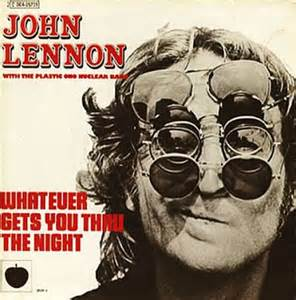 John Lennon’s appearance on stage on this day was actually due to losing a bet. When Elton John had contributed piano, organ and harmony vocals to John’s “Whatever Gets You Thru The Night” in the studio, the famous pianist was pleased with the results. He predicted that the song would be Lennon’s first #1 solo hit. “No, I’m out of favor here,” John Lennon responded, as quoted in Ray Coleman’s biography “Lennon.” John added: “It would be nice but it’s not a #1.” John Lennon’s appearance on stage on this day was actually due to losing a bet. When Elton John had contributed piano, organ and harmony vocals to John’s “Whatever Gets You Thru The Night” in the studio, the famous pianist was pleased with the results. He predicted that the song would be Lennon’s first #1 solo hit. “No, I’m out of favor here,” John Lennon responded, as quoted in Ray Coleman’s biography “Lennon.” John added: “It would be nice but it’s not a #1.”
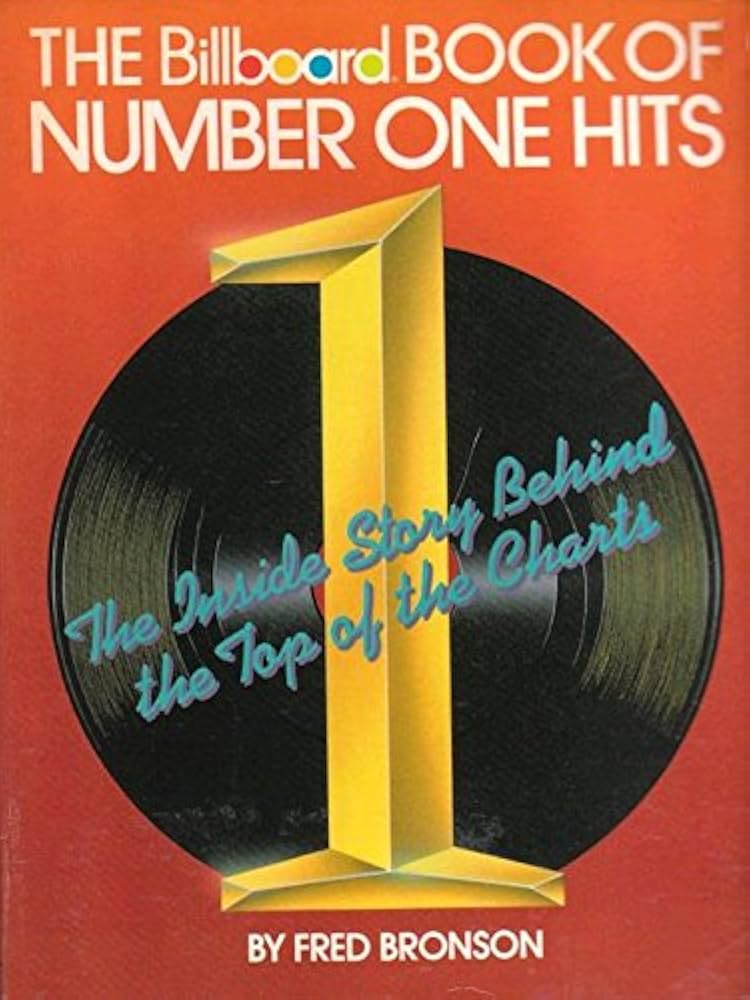 “Elton insisted it was and made a bargain with Lennon,” the book “The Billboard Book Of Number One Hits” states. “If the song reached the top of the chart, Lennon would have to appear in concert with him. John was so sure he had not recorded a smash hit, he agreed. (The record) entered the Billboard Hot 100 at #53 on September 28th, 1974. Seven weeks later, John Lennon knew he had to make good on his promise.” “Elton insisted it was and made a bargain with Lennon,” the book “The Billboard Book Of Number One Hits” states. “If the song reached the top of the chart, Lennon would have to appear in concert with him. John was so sure he had not recorded a smash hit, he agreed. (The record) entered the Billboard Hot 100 at #53 on September 28th, 1974. Seven weeks later, John Lennon knew he had to make good on his promise.”
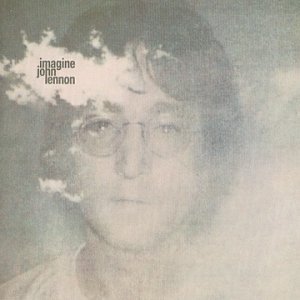 Elton John suggested Lennon perform “Imagine,” but he refused. He stated: “I didn’t want to come on like Dean Martin, doing my classic hits…I wanted to have some fun and play some rock ‘n’ roll. And I didn’t want to do more than three because it was Elton’s show.” Elton John's then recently released cover of “Lucy” was an obvious choice, Lennon playing rhythm guitar on a Fender Telecaster and singing along on the choruses, Elton John letting Lennon sing solo during the reggae chorus just before the final verse. Elton John suggested Lennon perform “Imagine,” but he refused. He stated: “I didn’t want to come on like Dean Martin, doing my classic hits…I wanted to have some fun and play some rock ‘n’ roll. And I didn’t want to do more than three because it was Elton’s show.” Elton John's then recently released cover of “Lucy” was an obvious choice, Lennon playing rhythm guitar on a Fender Telecaster and singing along on the choruses, Elton John letting Lennon sing solo during the reggae chorus just before the final verse.
Conclusion
“This one’s one of the best songs ever written.” This 1974 quote from Elton John typifies the allure and mystique that “Lucy In The Sky With Diamonds” had on the public at large when it was released and for many years thereafter. It deservedly earned its place on the greatest hits compilation “The Beatles 1967/1970” and received heavy radio airplay on pop and rock radio stations throughout the world.
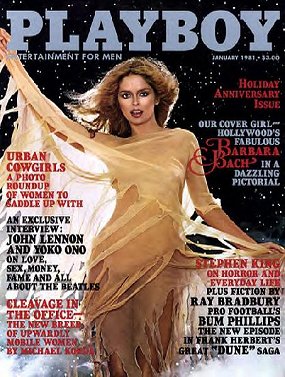 However, as time has passed, “Lucy” is a song that has sadly lost some of that allure. Radio doesn’t touch it except on very rare occasions; even Elton John’s chart-topping rendition. Current listeners pass it off as a ‘period piece’ and writers dismiss it as “poorly thought out, succeeding more as a glamorous production than as an integrated song,” as author Ian MacDonald states in his book “Revolution In The Head.” Another quote that possibly didn’t help the its popularity was in Lennon’s 1980 Playboy interview. “There was also the image of the female who would someday come save me – ‘a girl with kaleidoscope eyes,’ who would come out of the sky. It turned out to be Yoko, though I hadn’t met Yoko yet. So maybe it should be ‘Yoko In The Sky With Diamonds.’” However, as time has passed, “Lucy” is a song that has sadly lost some of that allure. Radio doesn’t touch it except on very rare occasions; even Elton John’s chart-topping rendition. Current listeners pass it off as a ‘period piece’ and writers dismiss it as “poorly thought out, succeeding more as a glamorous production than as an integrated song,” as author Ian MacDonald states in his book “Revolution In The Head.” Another quote that possibly didn’t help the its popularity was in Lennon’s 1980 Playboy interview. “There was also the image of the female who would someday come save me – ‘a girl with kaleidoscope eyes,’ who would come out of the sky. It turned out to be Yoko, though I hadn’t met Yoko yet. So maybe it should be ‘Yoko In The Sky With Diamonds.’”
 The sorrowful death of Lucy Vodden (O’Donnell), the unintentional inspiration for the song, in 2009 from Lupus then hit the media. The story of Julian Lennon’s recent re-connection with her spurred an emotional response from readers, this resulting in Julian releasing a tribute single after her passing titled “Lucy” which gave 50% of the proceeds to fund Lupus research. This increased interest undoubtedly gave the original Beatles song more credibility, resulting in it coming in at #19 in the 2010 released “The Beatles 100 Greatest Songs” special edition of Rolling Stone magazine. It is hoped that, once again, the creative collective genius of “Lucy In The Sky With Diamonds” has deservedly captured the hearts of the public at large as, in the very least, a historic piece of music that played a large part in sparking the creativity of musicians and songwriters throughout time. The sorrowful death of Lucy Vodden (O’Donnell), the unintentional inspiration for the song, in 2009 from Lupus then hit the media. The story of Julian Lennon’s recent re-connection with her spurred an emotional response from readers, this resulting in Julian releasing a tribute single after her passing titled “Lucy” which gave 50% of the proceeds to fund Lupus research. This increased interest undoubtedly gave the original Beatles song more credibility, resulting in it coming in at #19 in the 2010 released “The Beatles 100 Greatest Songs” special edition of Rolling Stone magazine. It is hoped that, once again, the creative collective genius of “Lucy In The Sky With Diamonds” has deservedly captured the hearts of the public at large as, in the very least, a historic piece of music that played a large part in sparking the creativity of musicians and songwriters throughout time.
Song Summary
“Lucy In The Sky With Diamonds”
Written by: John Lennon / Paul McCartney
-
Song Written: February, 1967
-
Song Recorded: March 1 & 2, 1967
-
First US Release Date: June 2, 1967
-
-
US Single Release: Capitol Cema #S7-18896 (red vinyl)
-
Highest Chart Position: n/a
-
-
Length: 3:25
-
Key: G major
-
Producer: George Martin
-
Engineers: Geoff Emerick, Richard Lush
Instrumentation (most likely):
-
John Lennon - Lead Vocals, maracas
-
Paul McCartney - Organ (1965 Lowery DSO Heritage Deluxe), Bass Guitar (1964 Rickenbacker 4001S), Harmony Vocals
-
George Harrison – Tamboura, Lead Guitar (1961 Sonic Blue Fender Stratocaster)
-
Ringo Starr – Drums (1964 Ludwig Super Classic Black Oyster Pearl)
-
George Martin - Piano (Hamburg Steinway Baby Grand)
Written and compiled by Dave Rybaczewski
|
IF YOU WOULD LIKE TO MAKE A DONATION TO KEEP THIS WEBSITE UP AND RUNNING, PLEASE CLICK BELOW!
Sign Up Below for our MONTHLY BEATLES TRIVIA QUIZ!
|